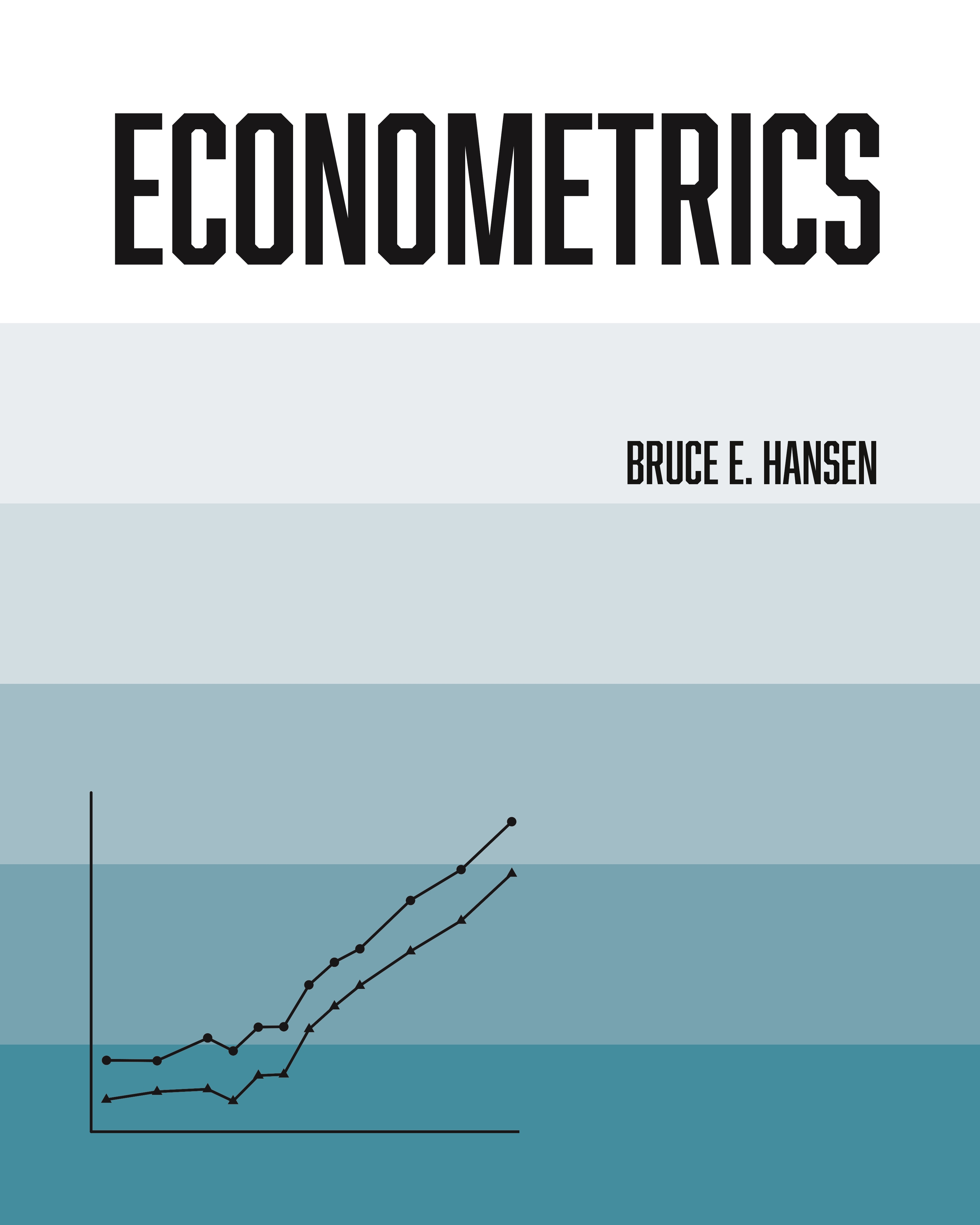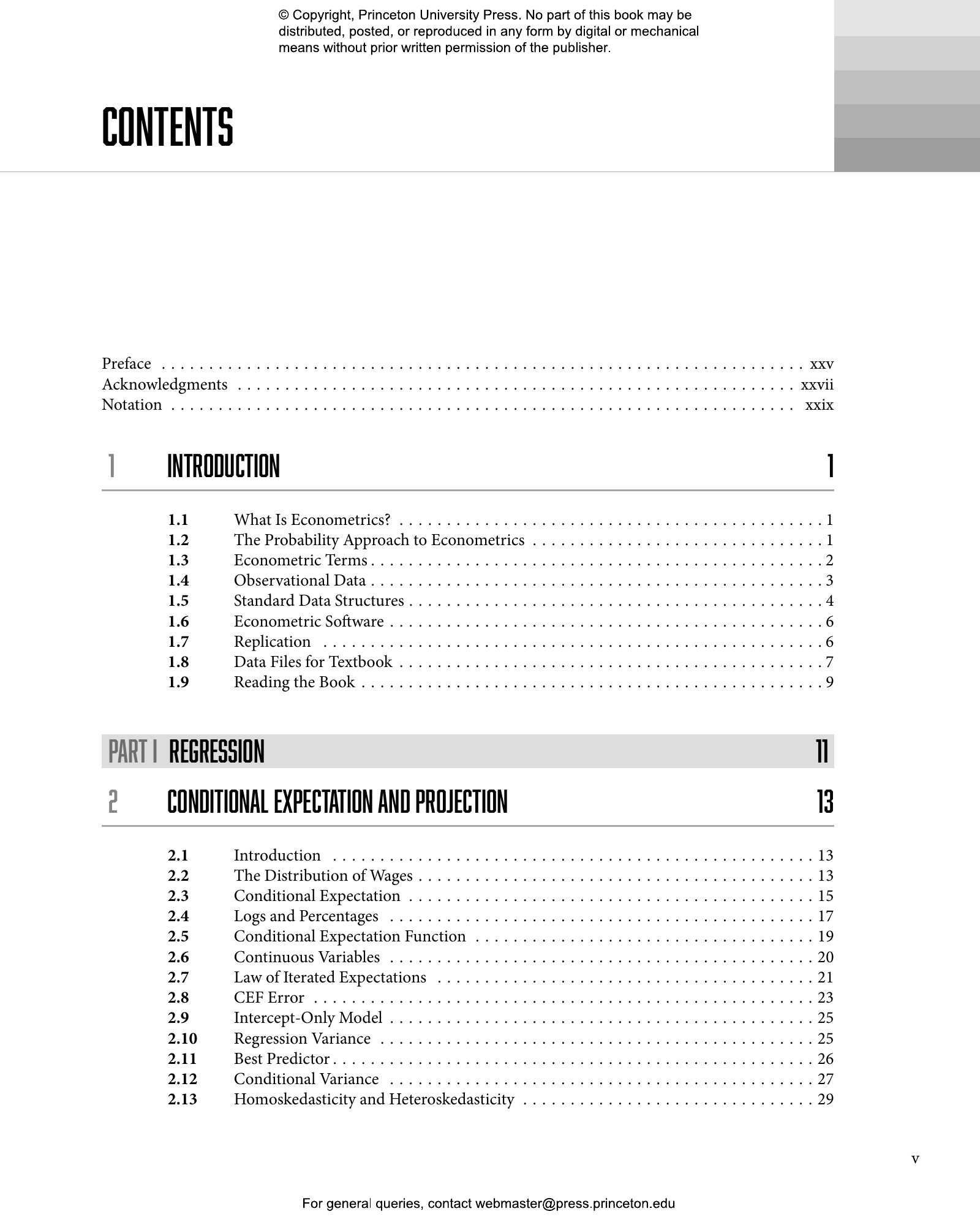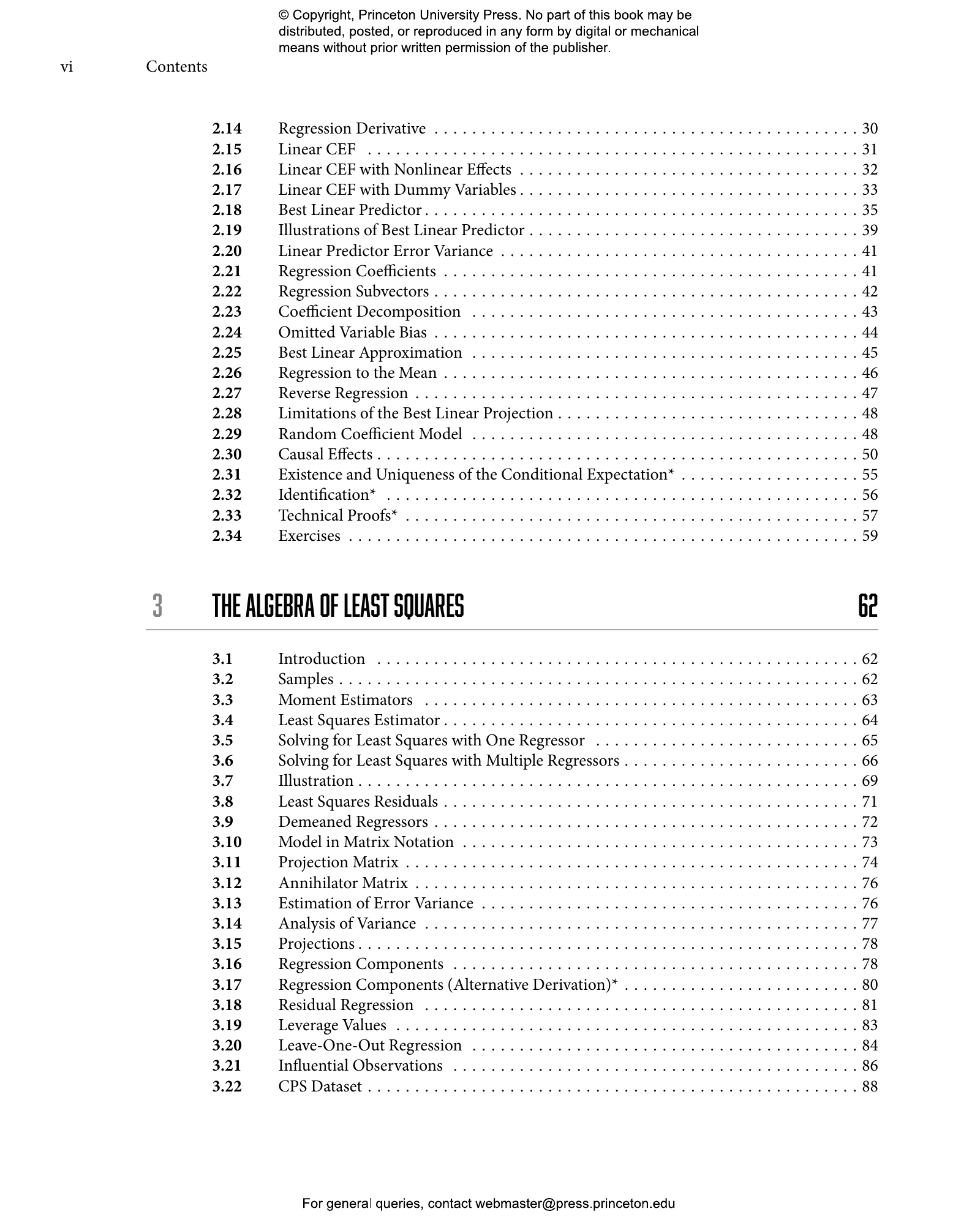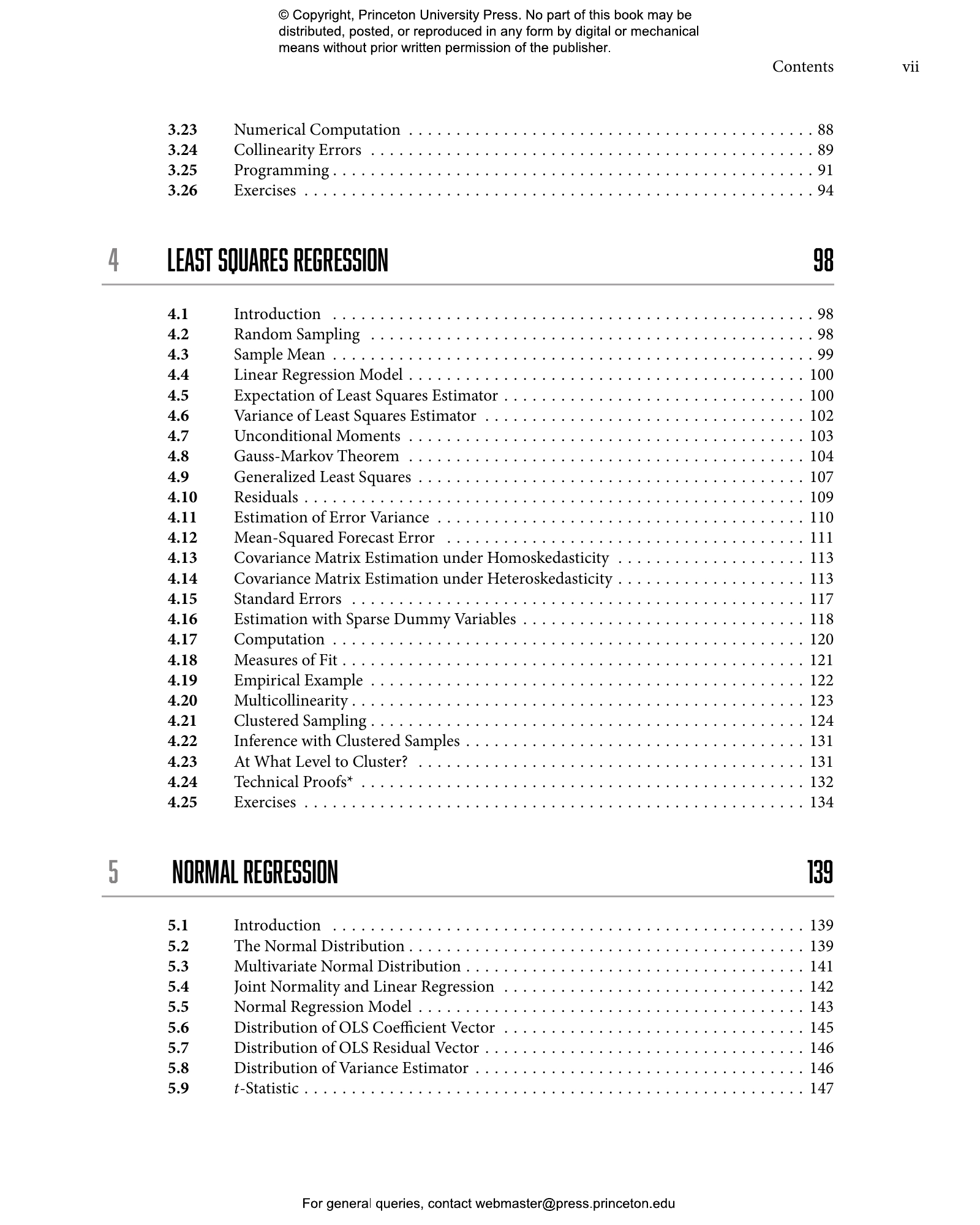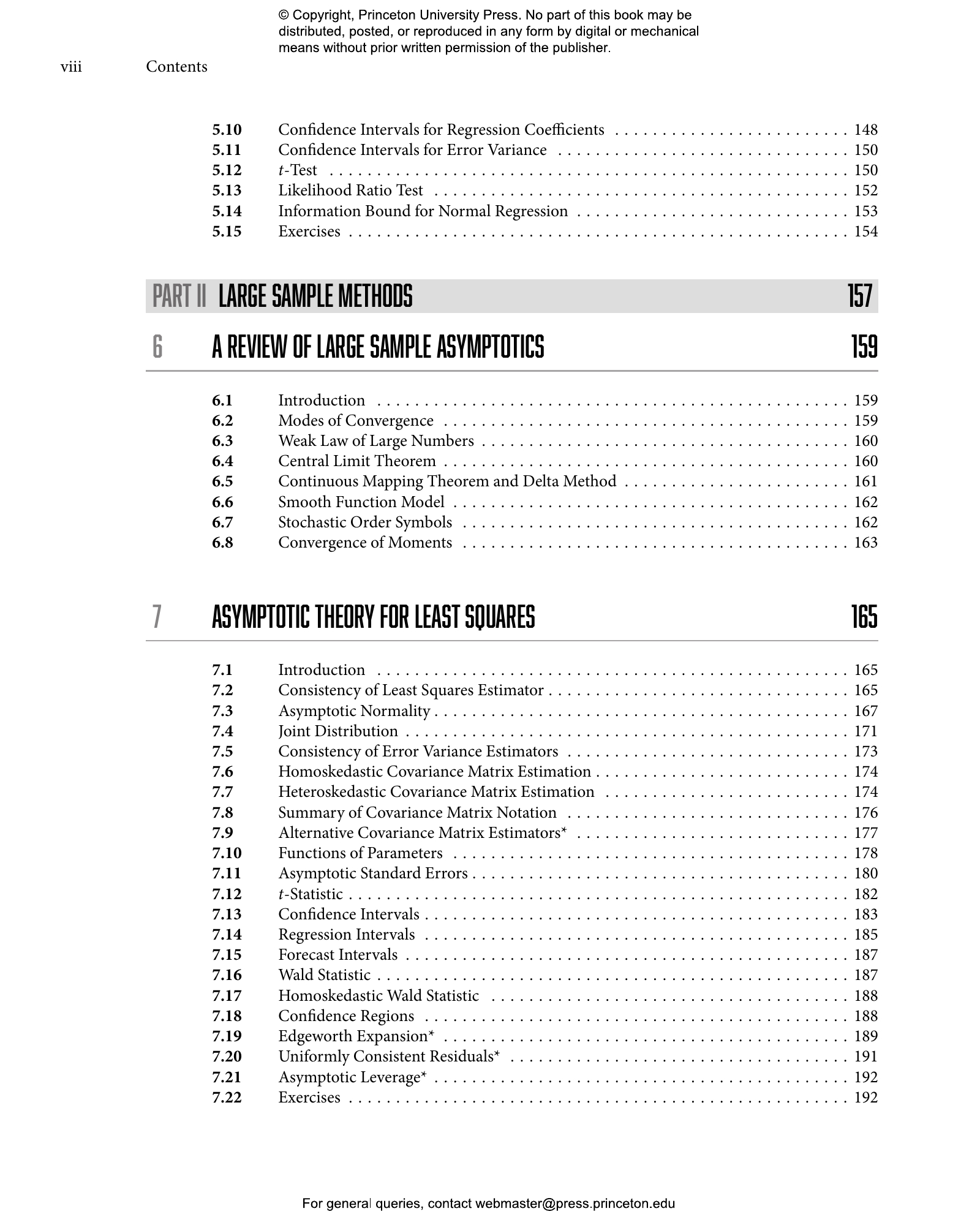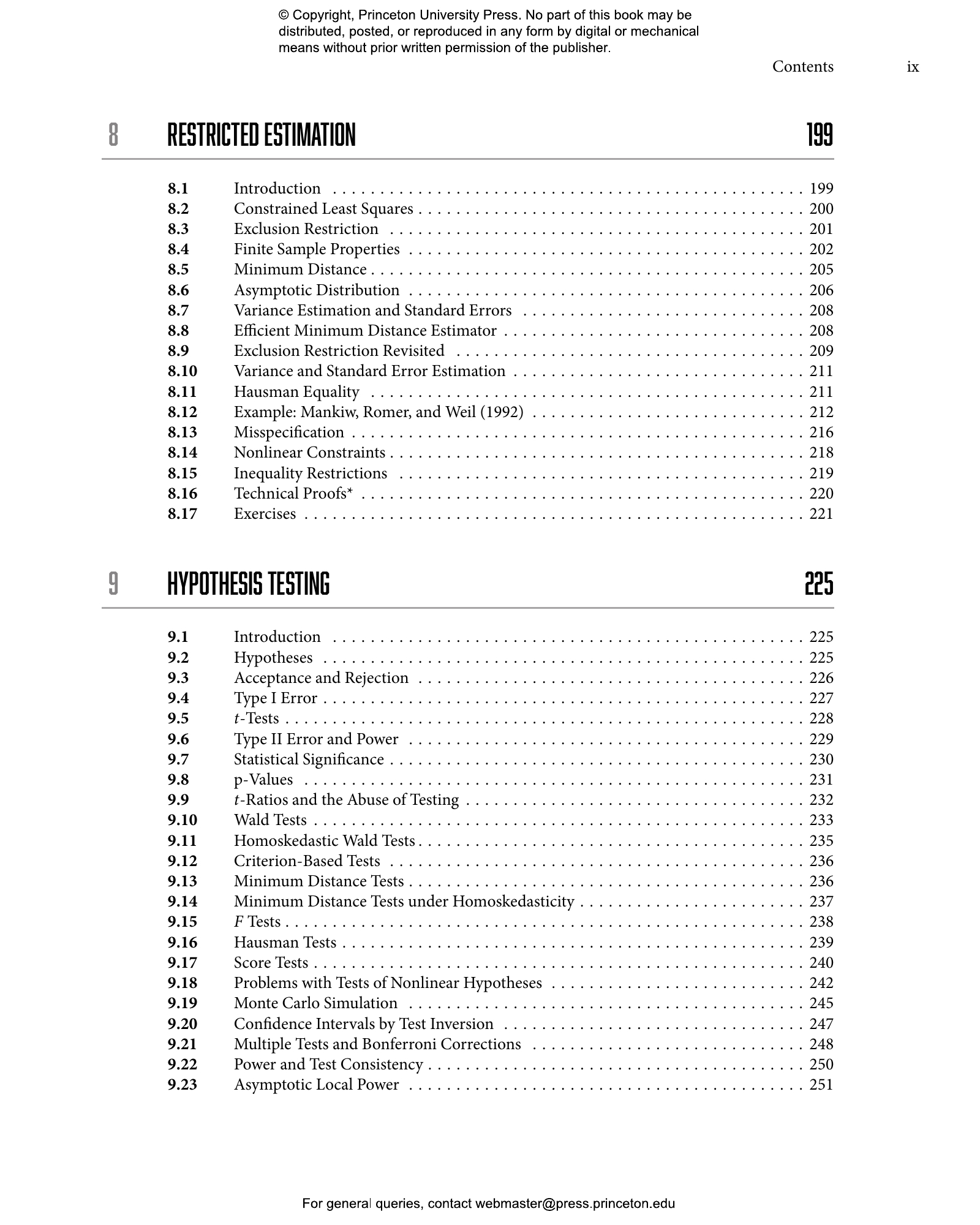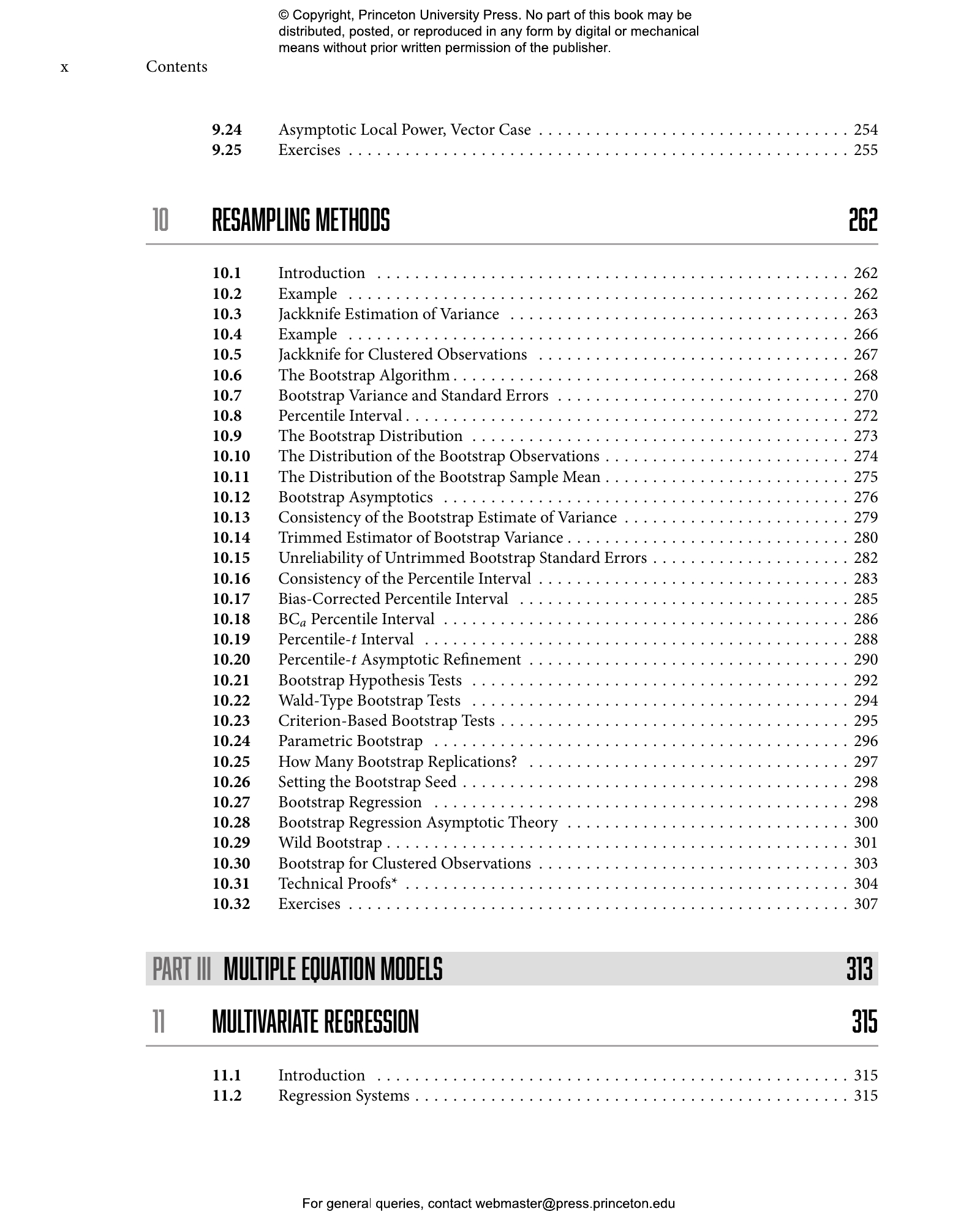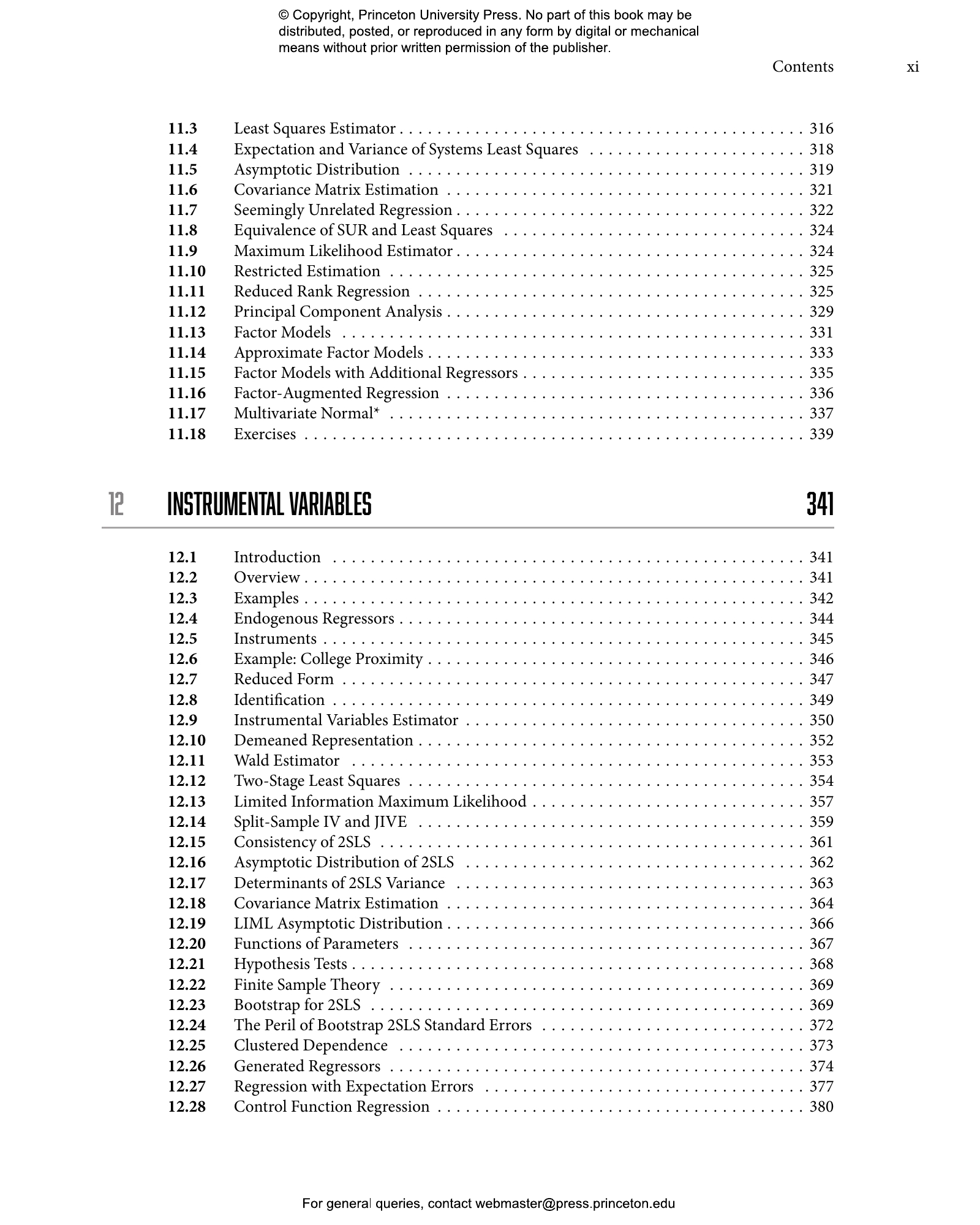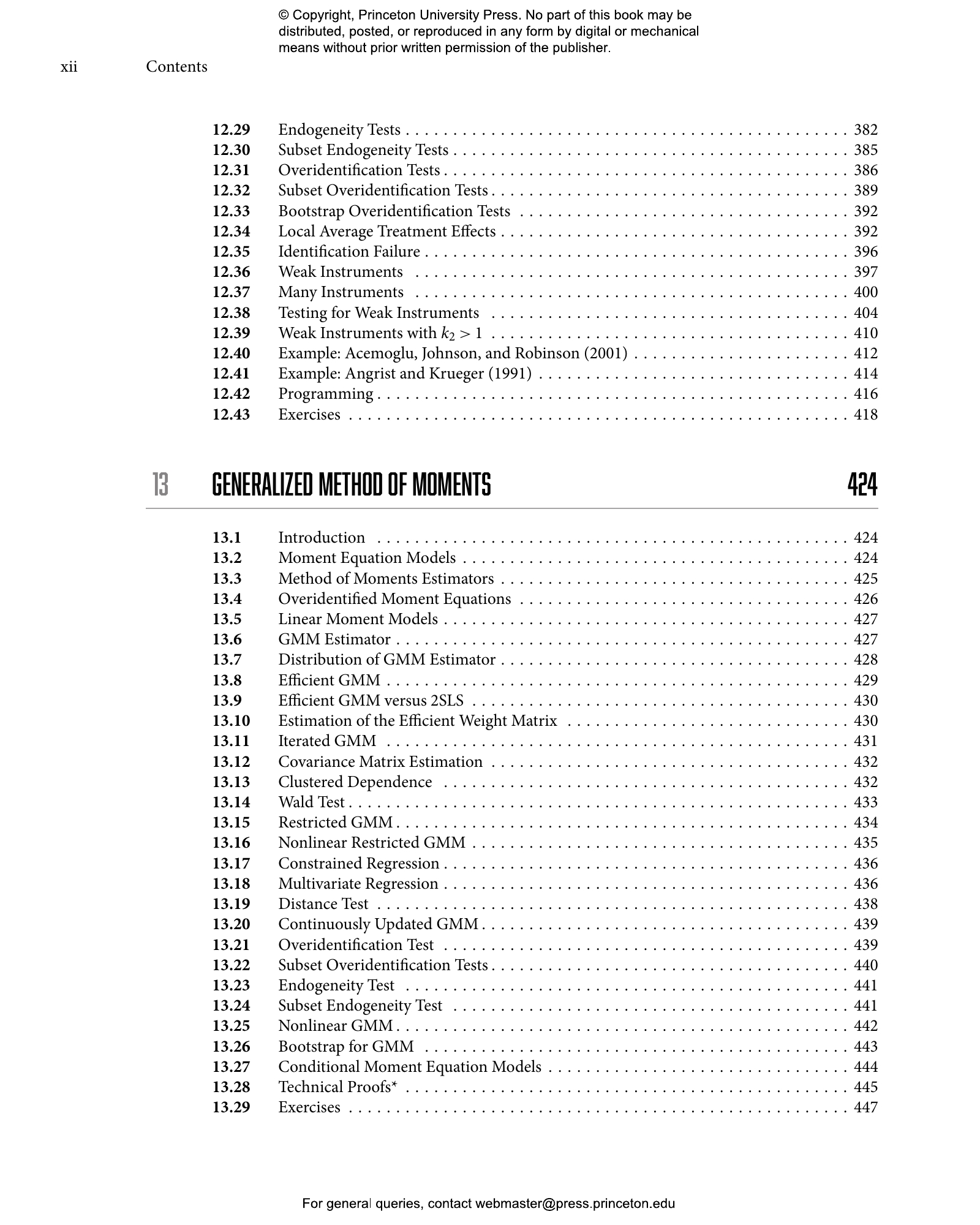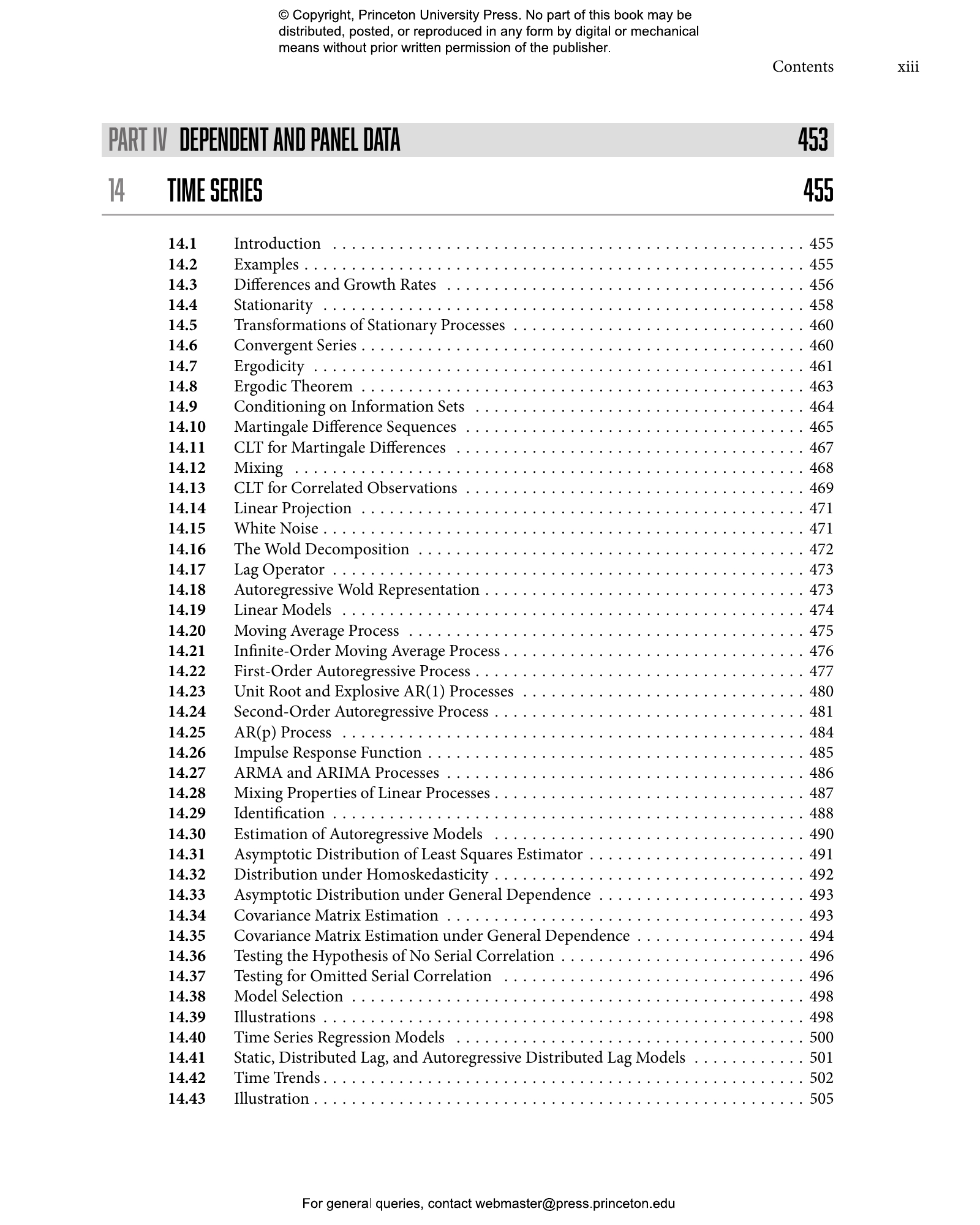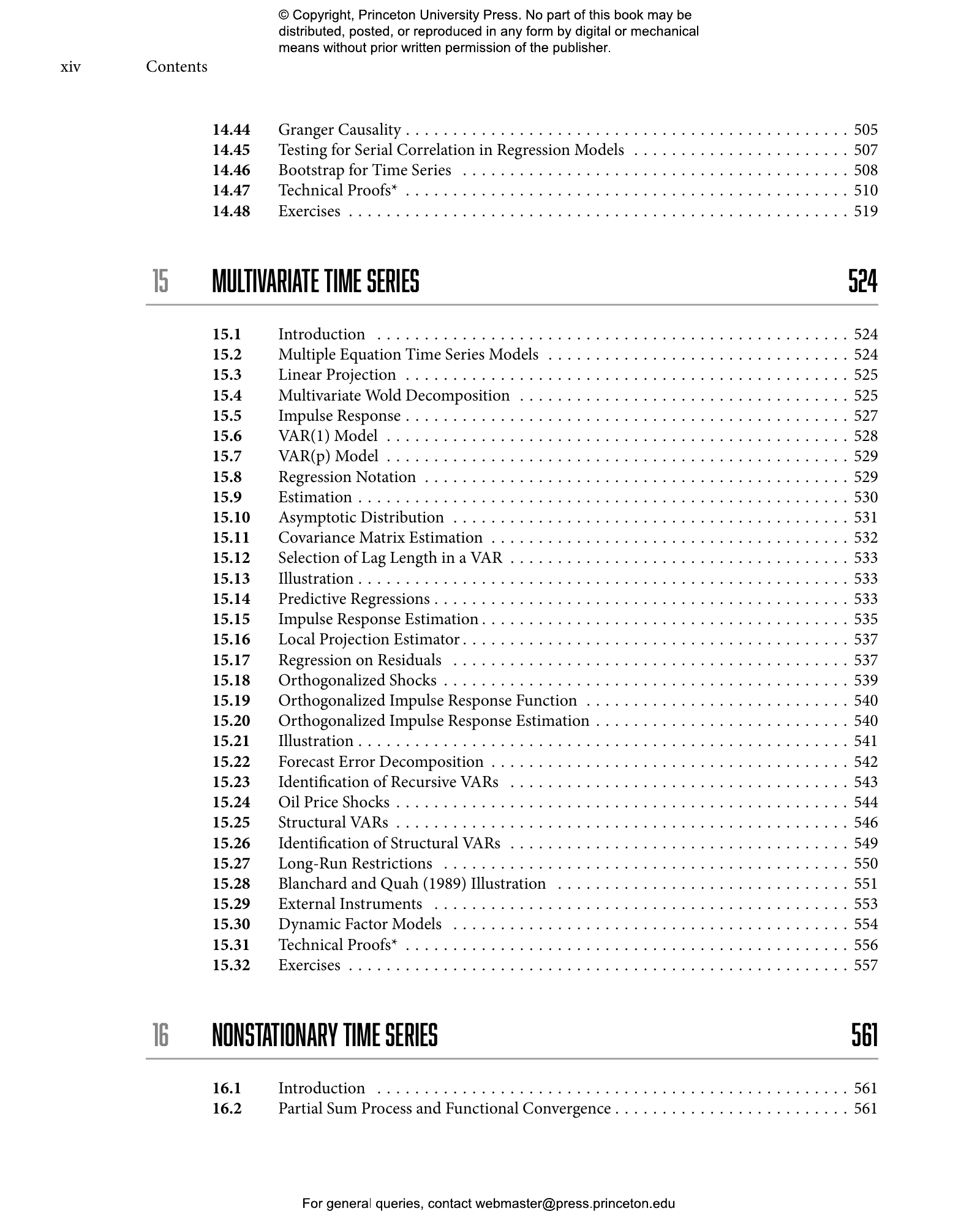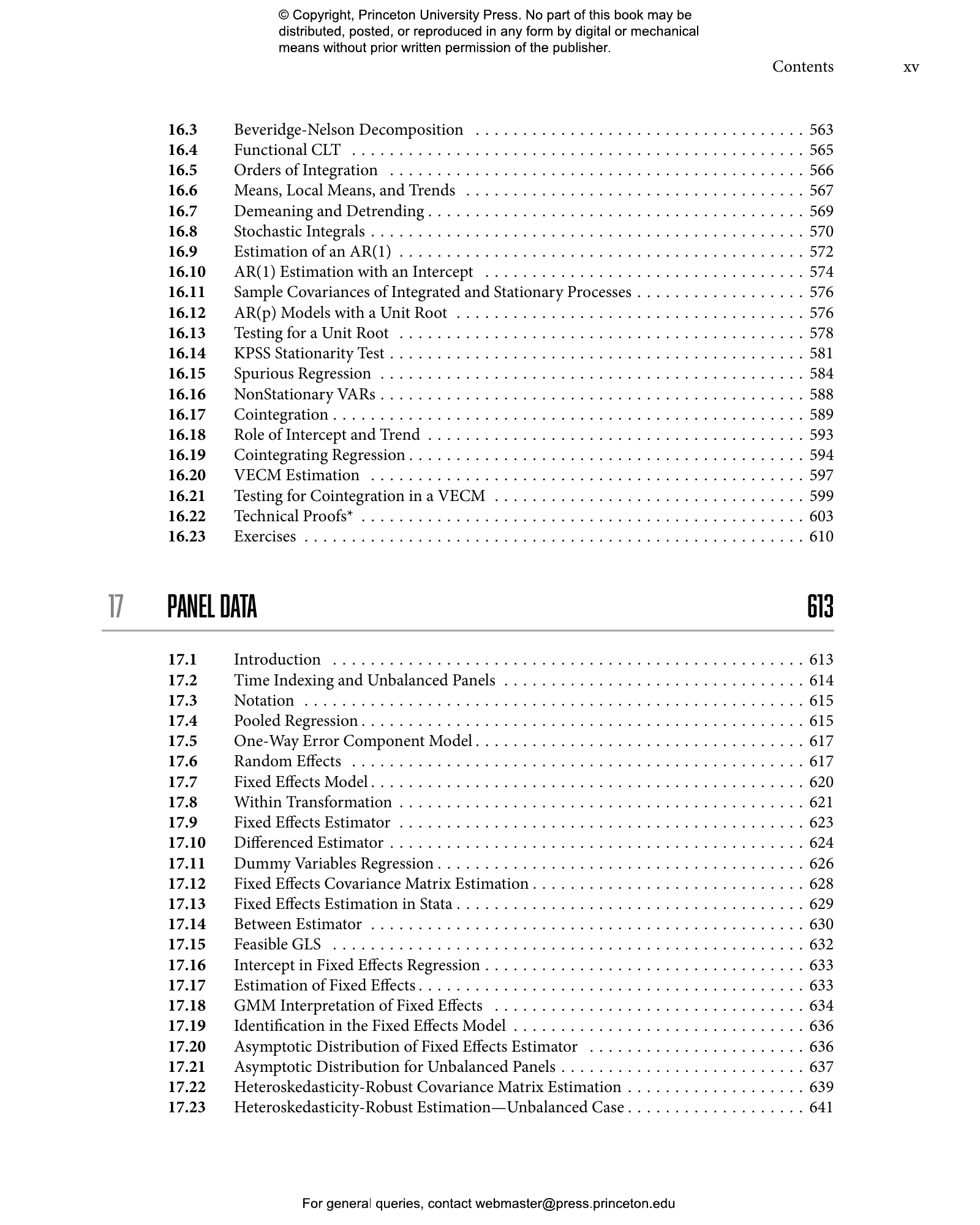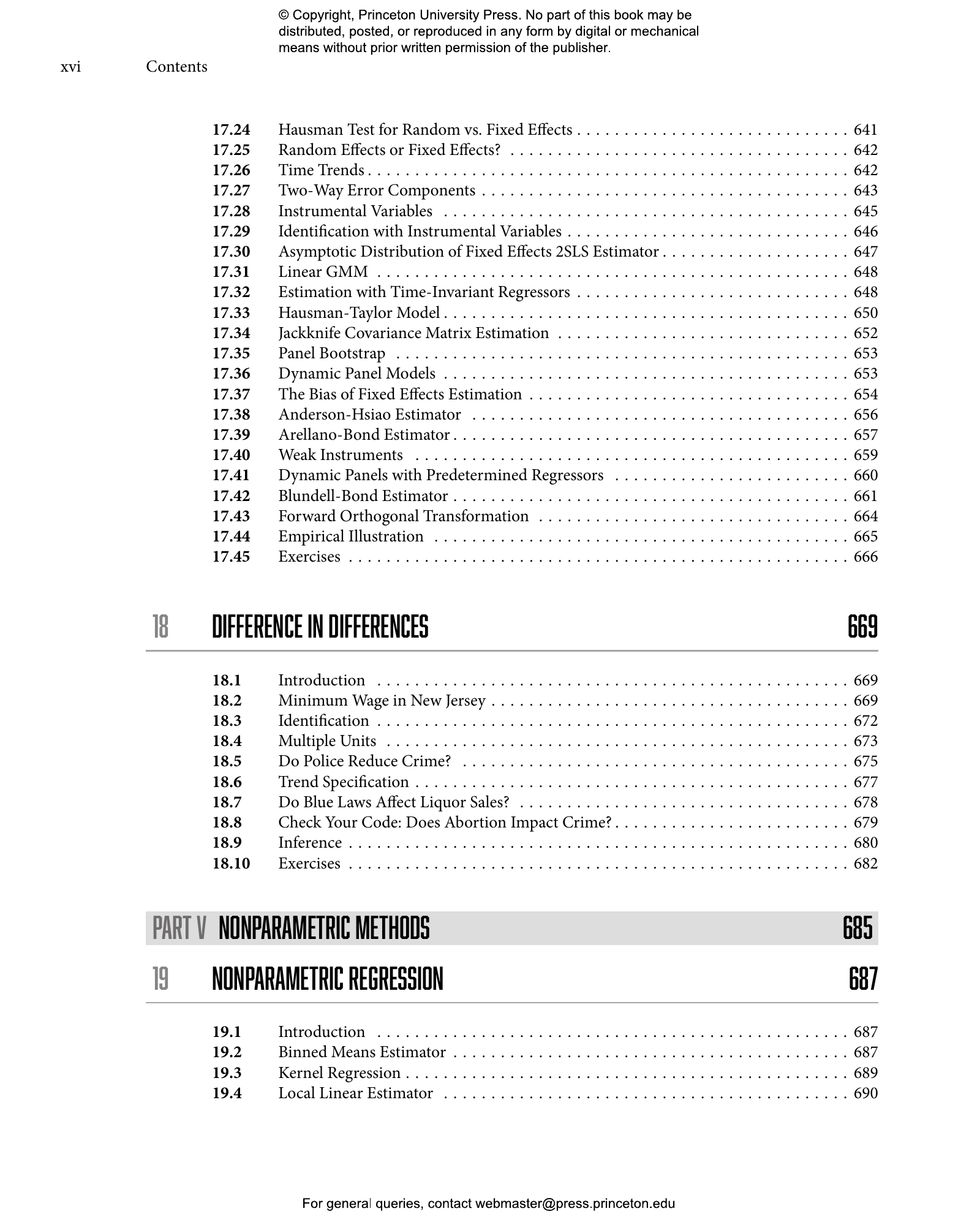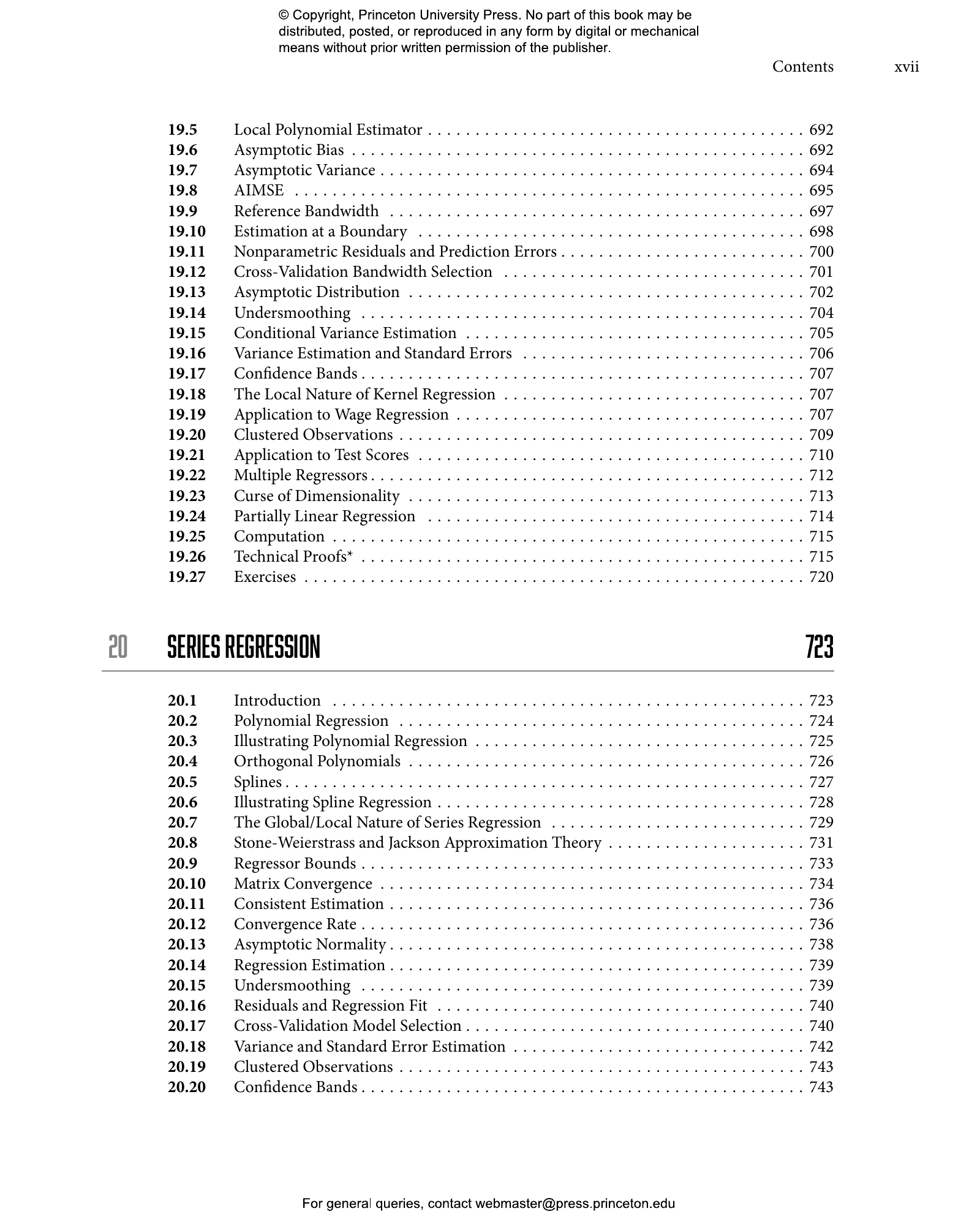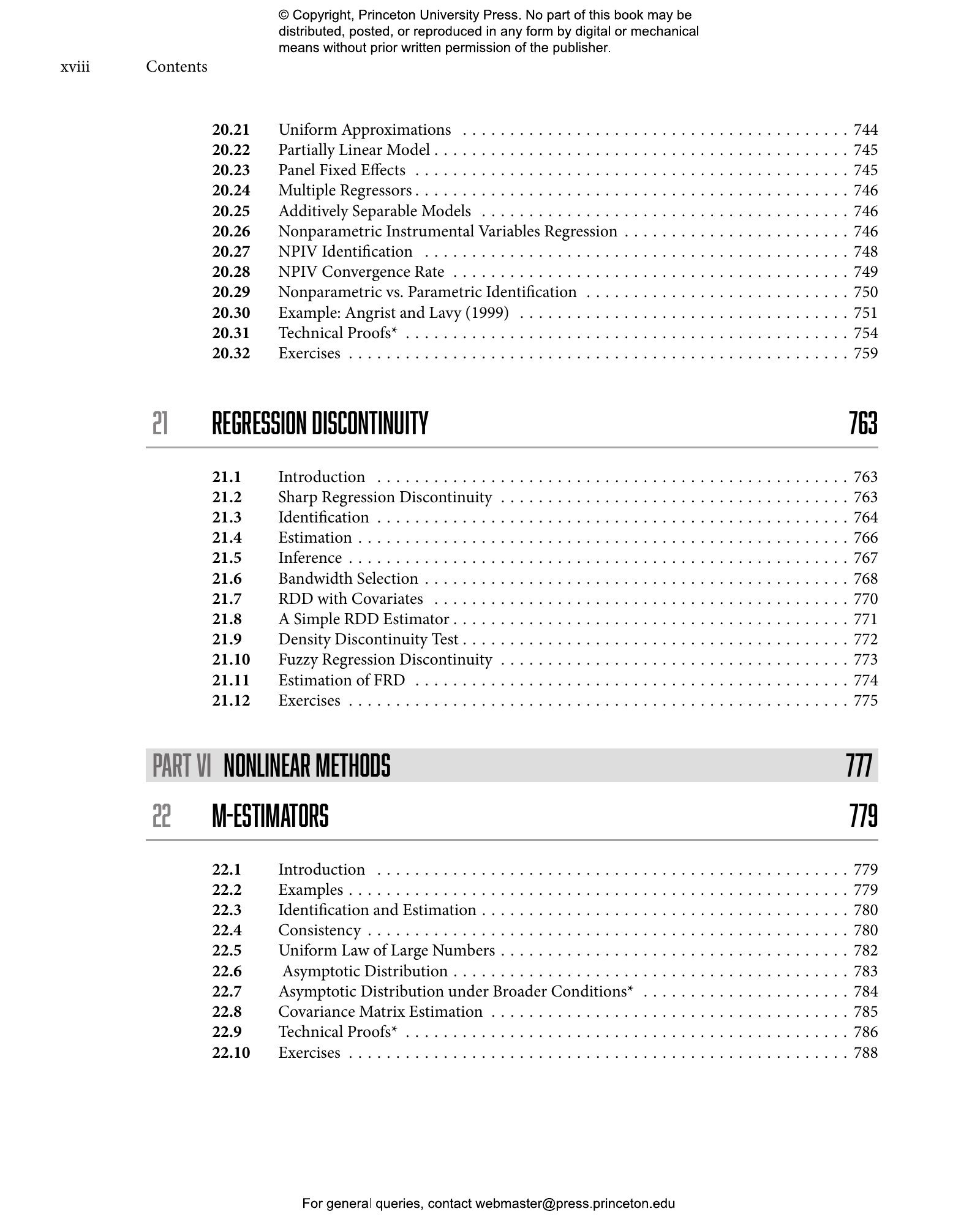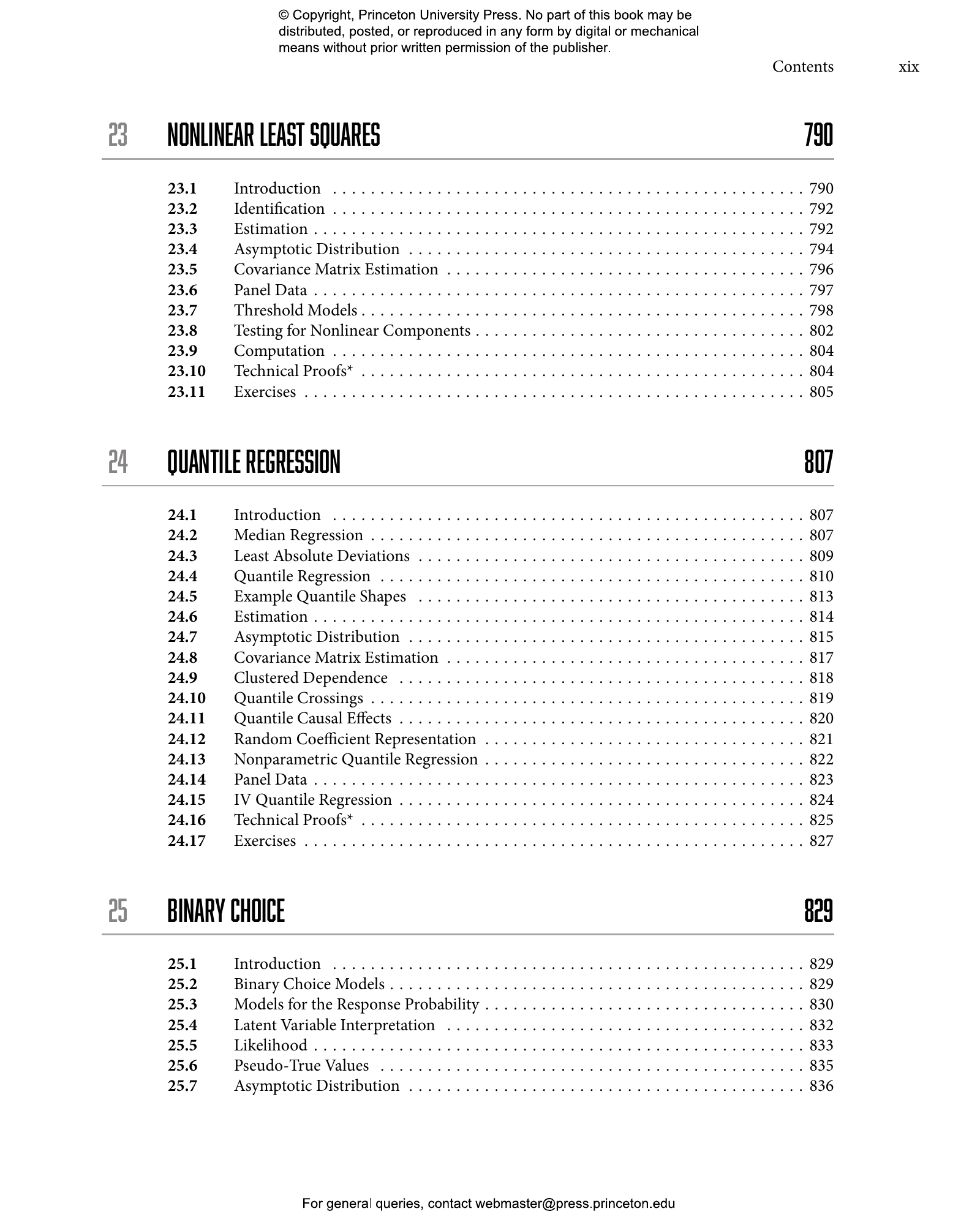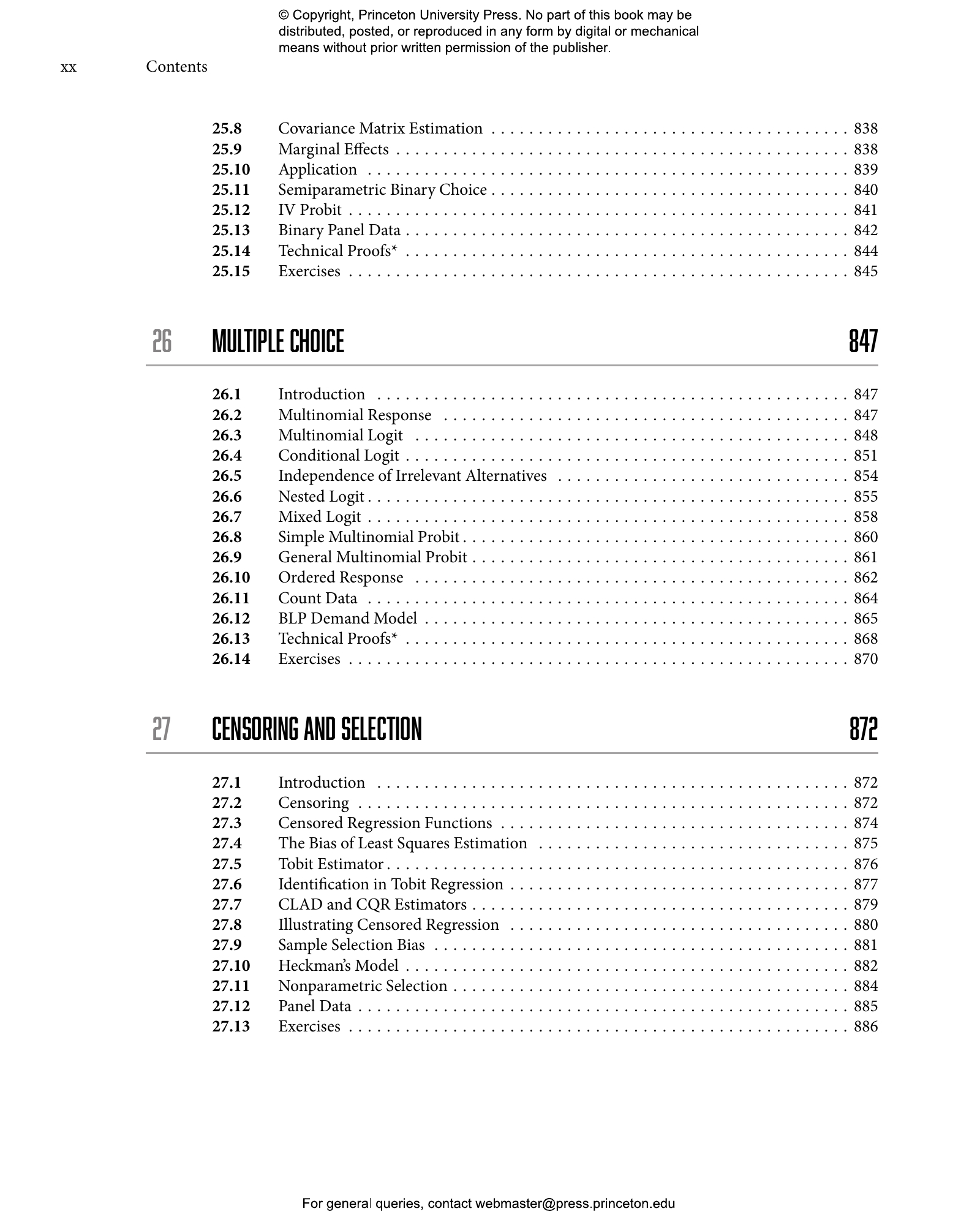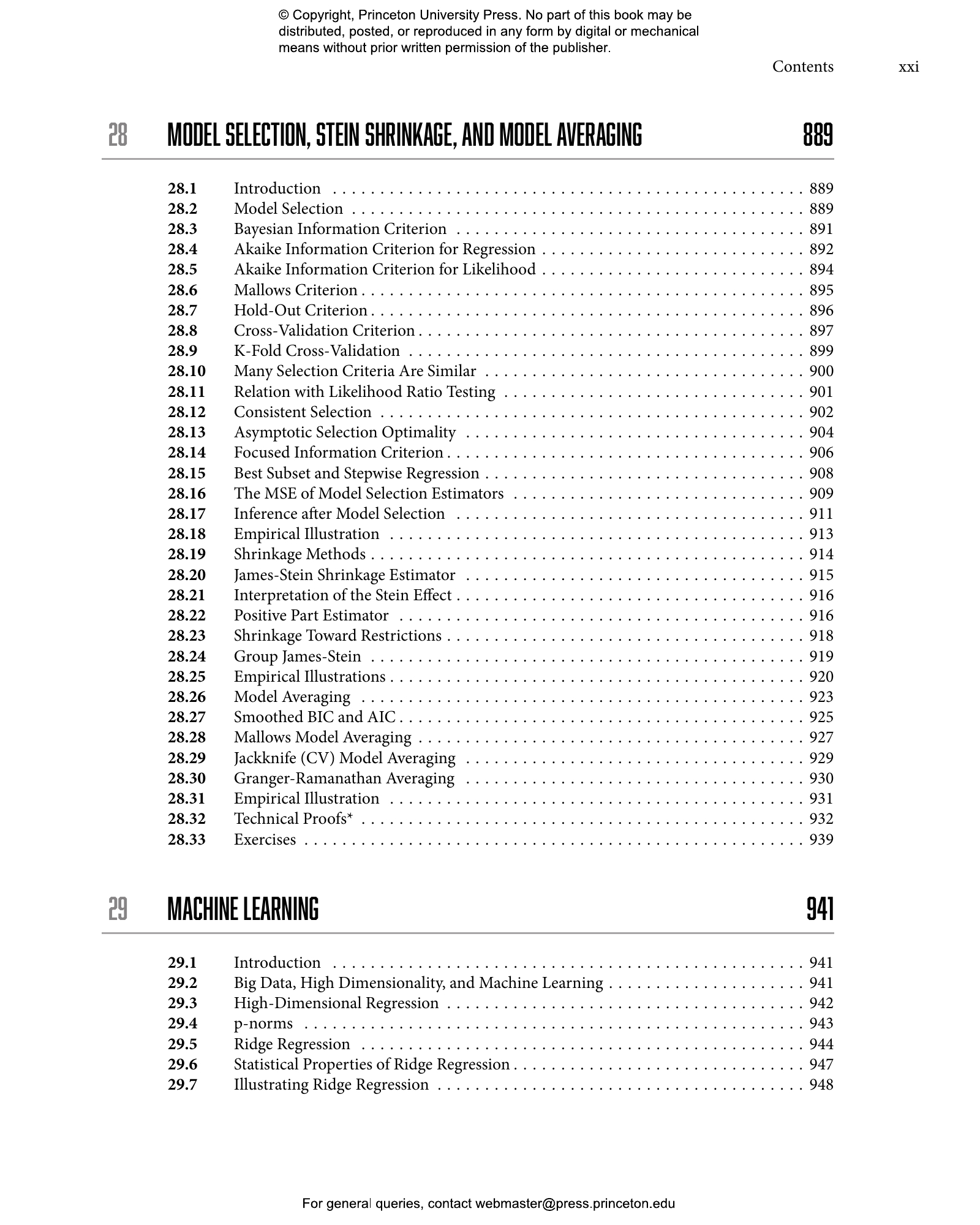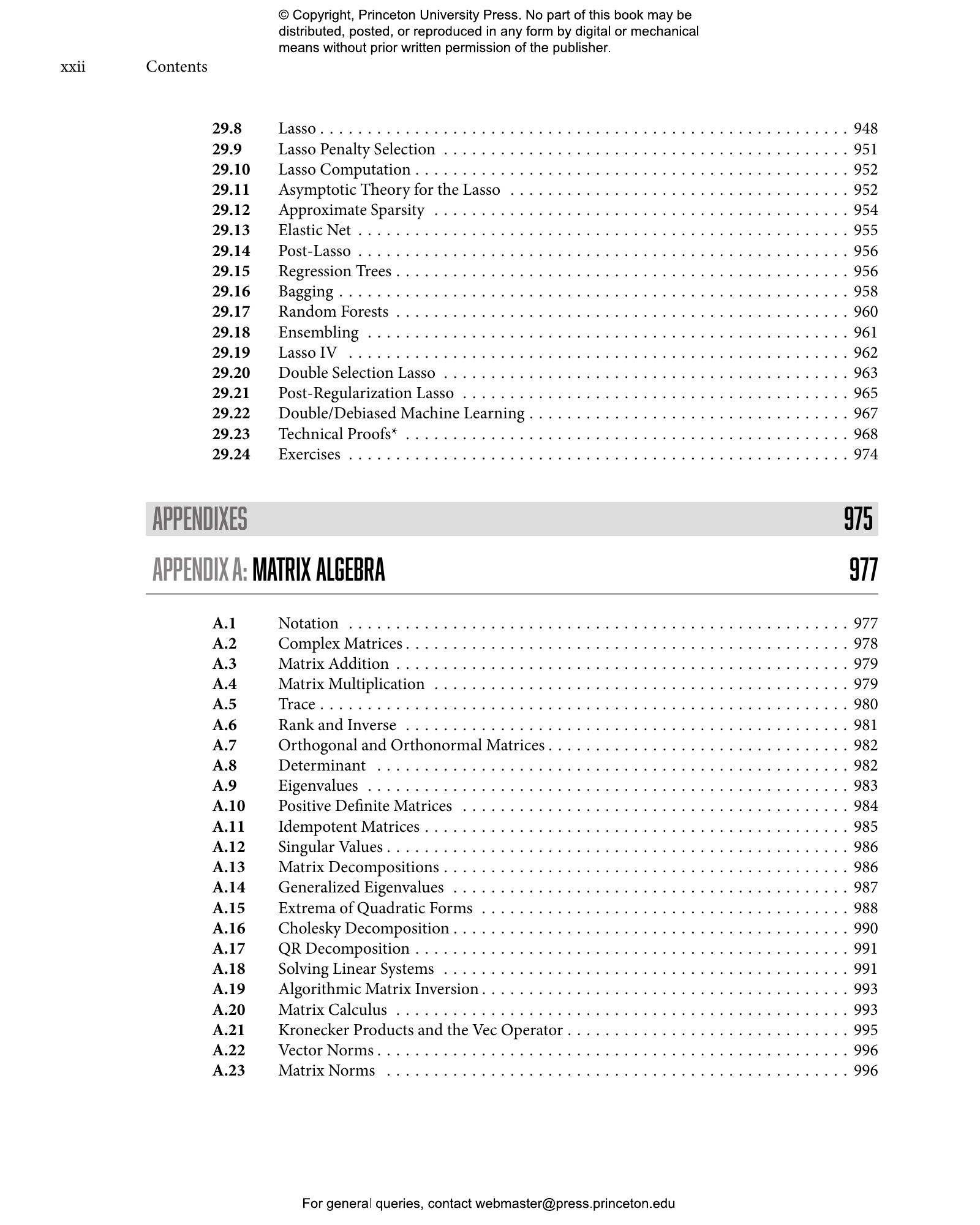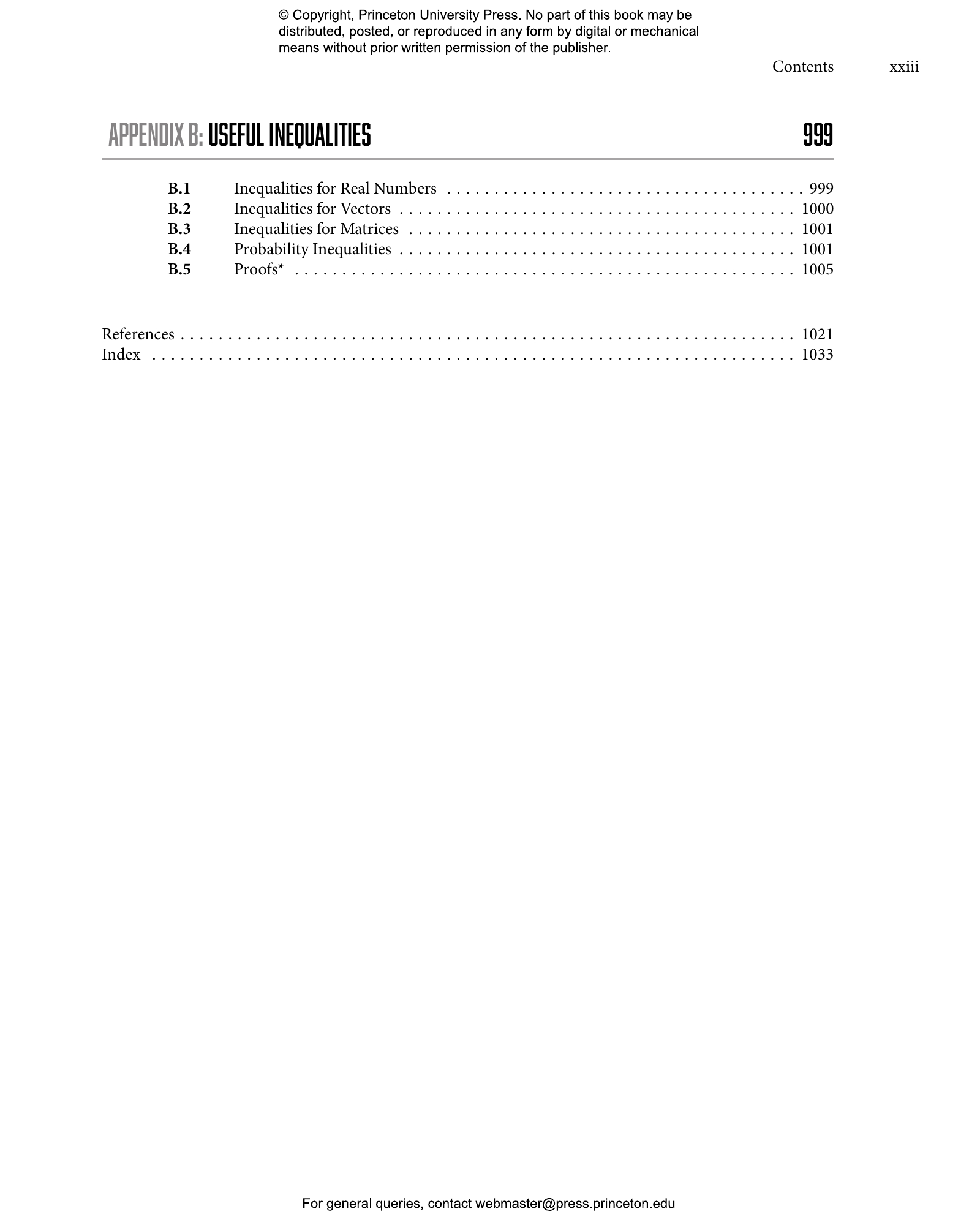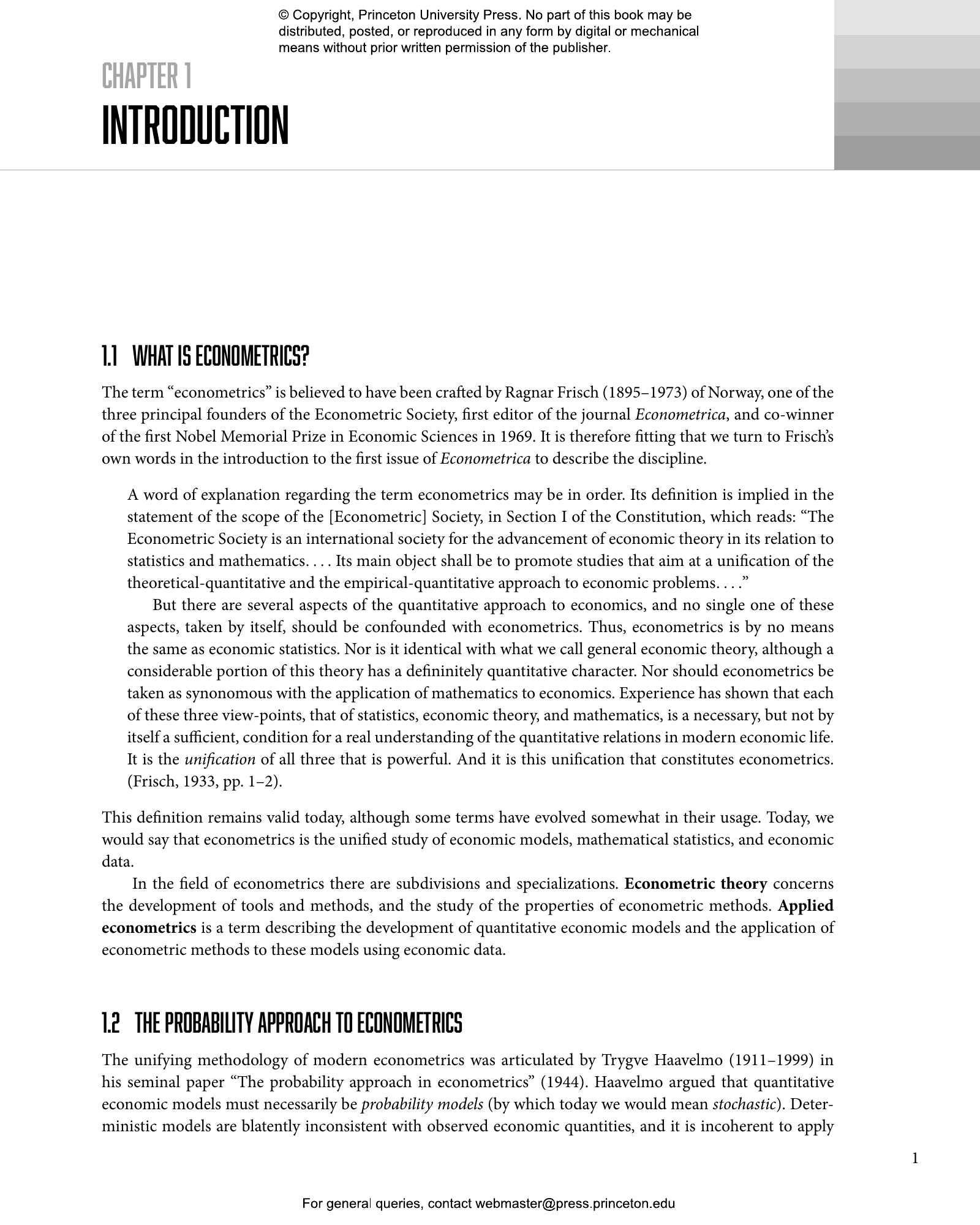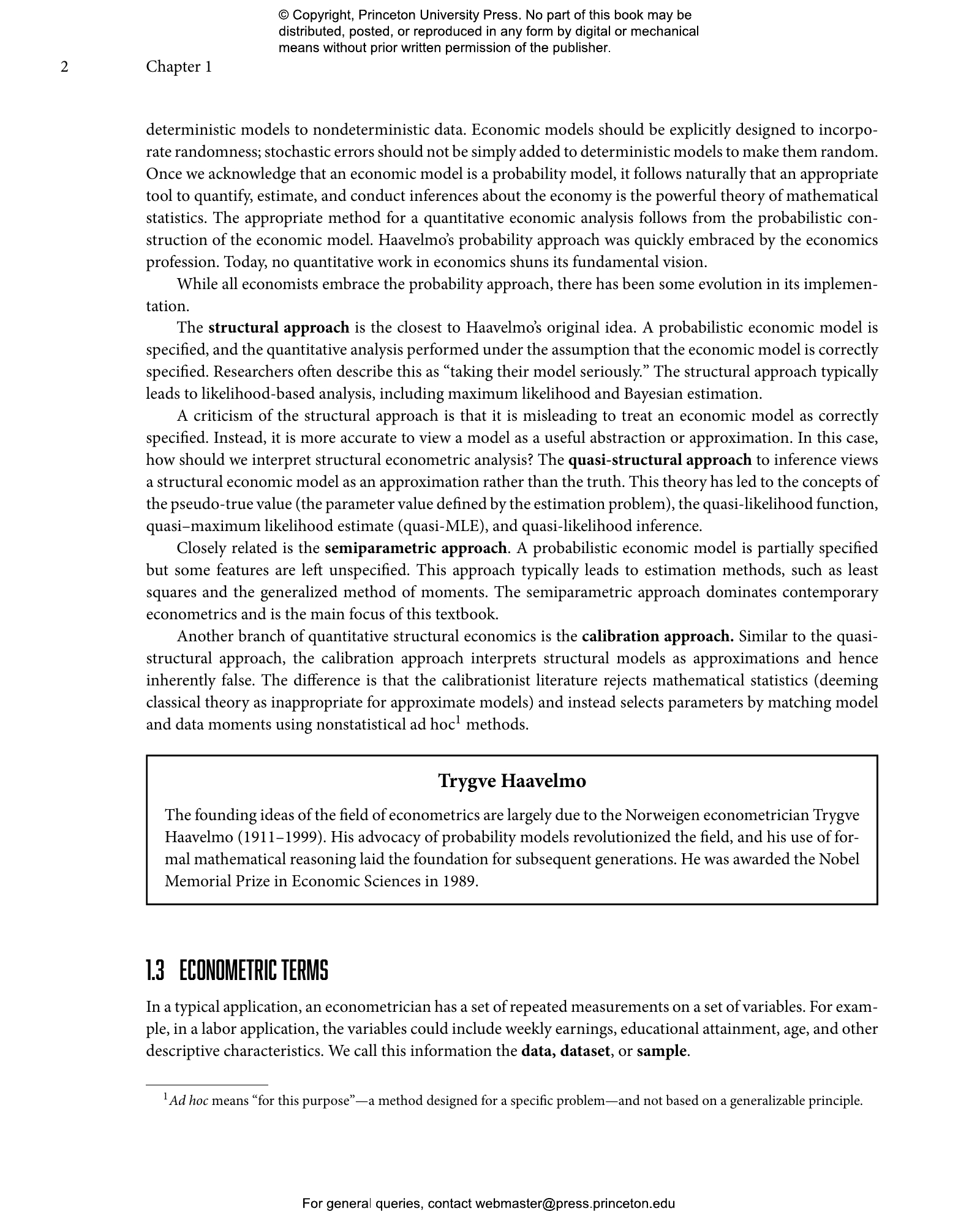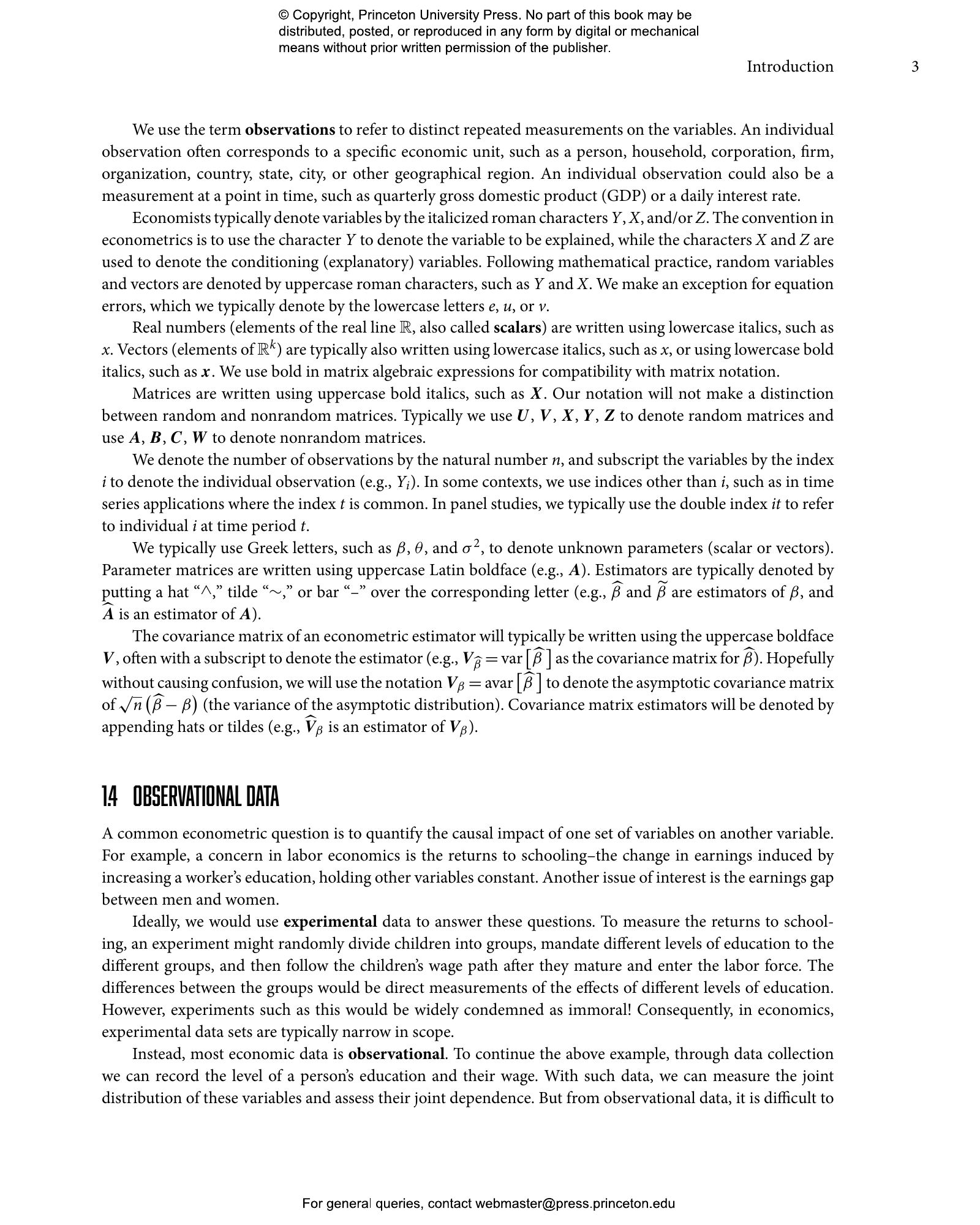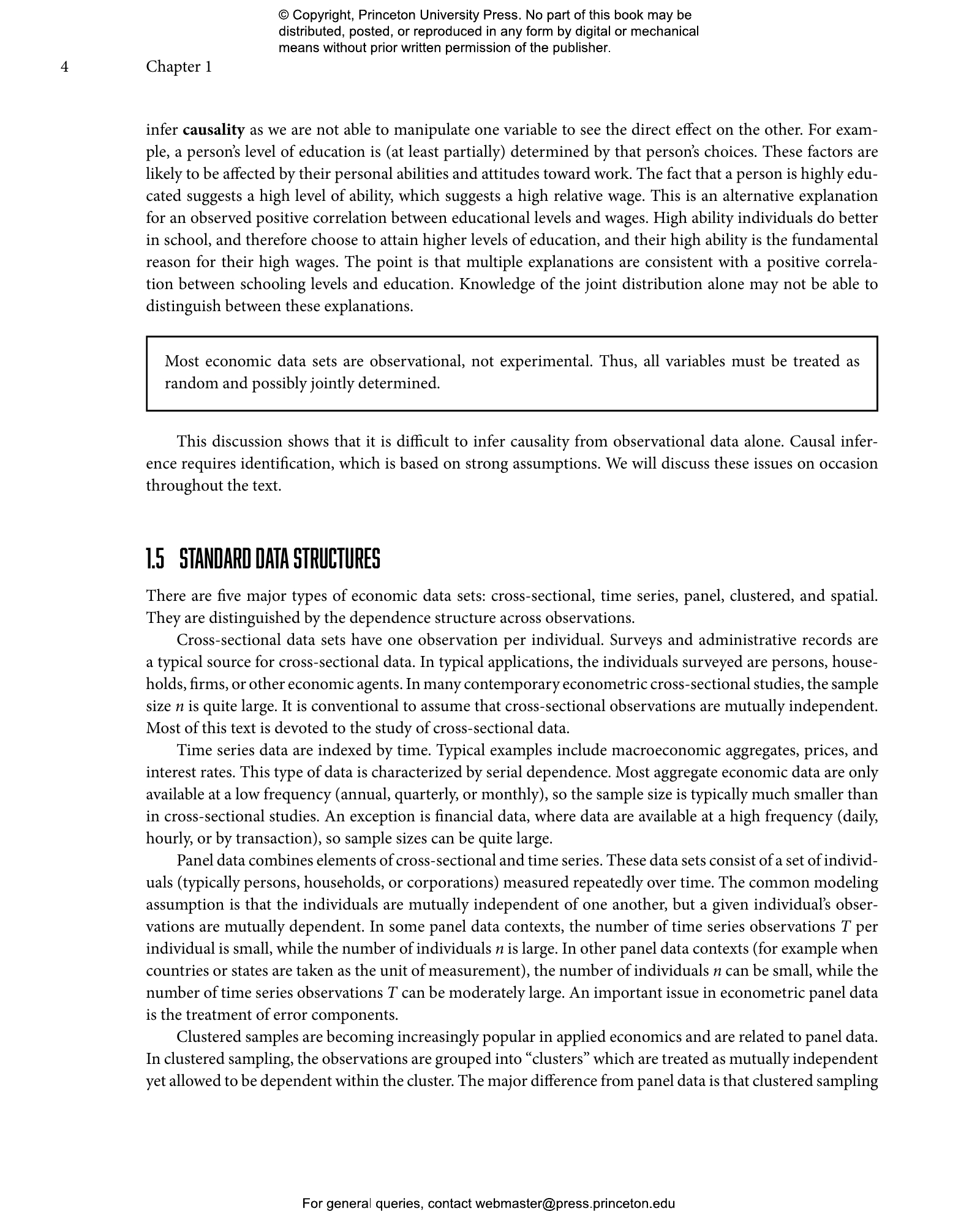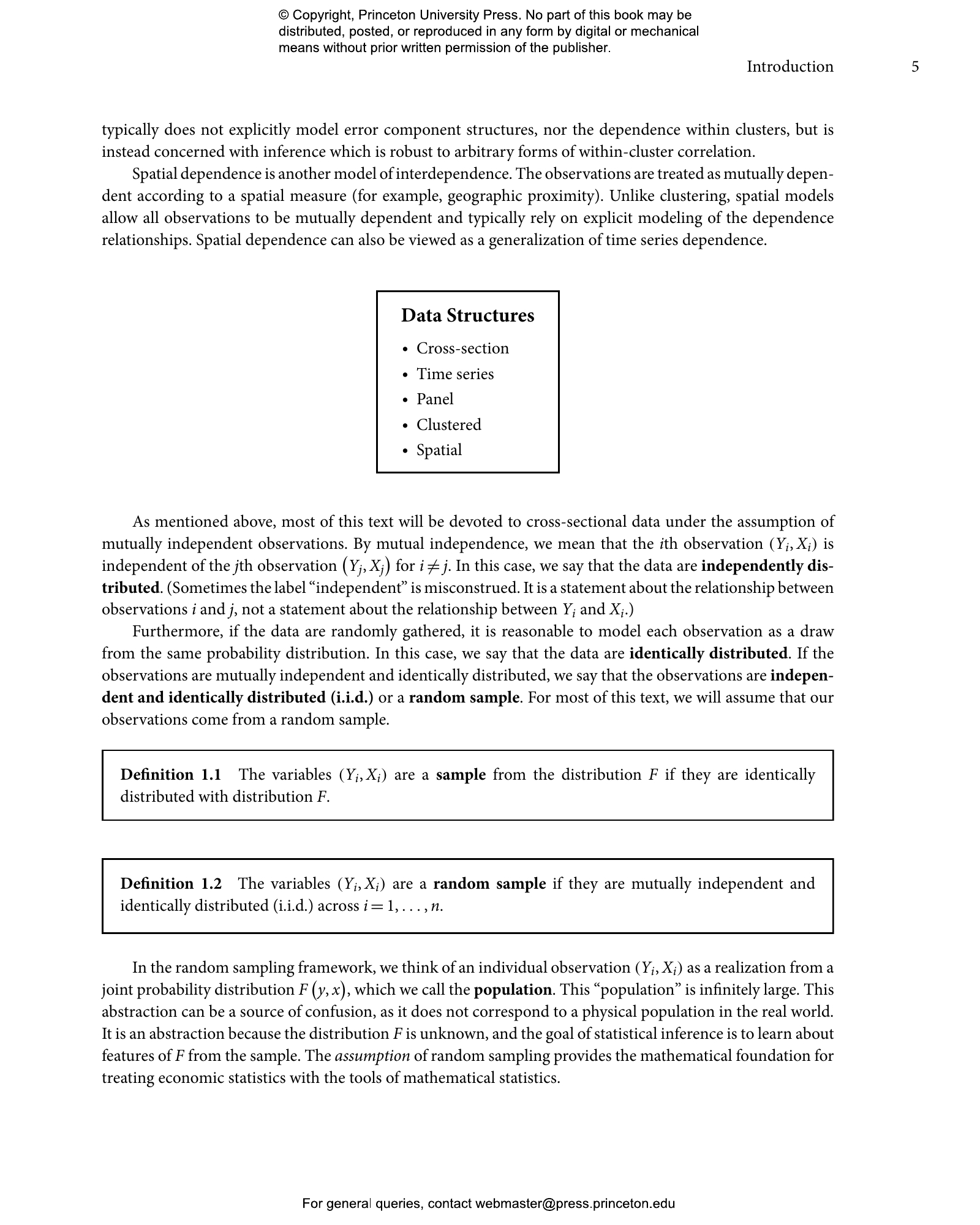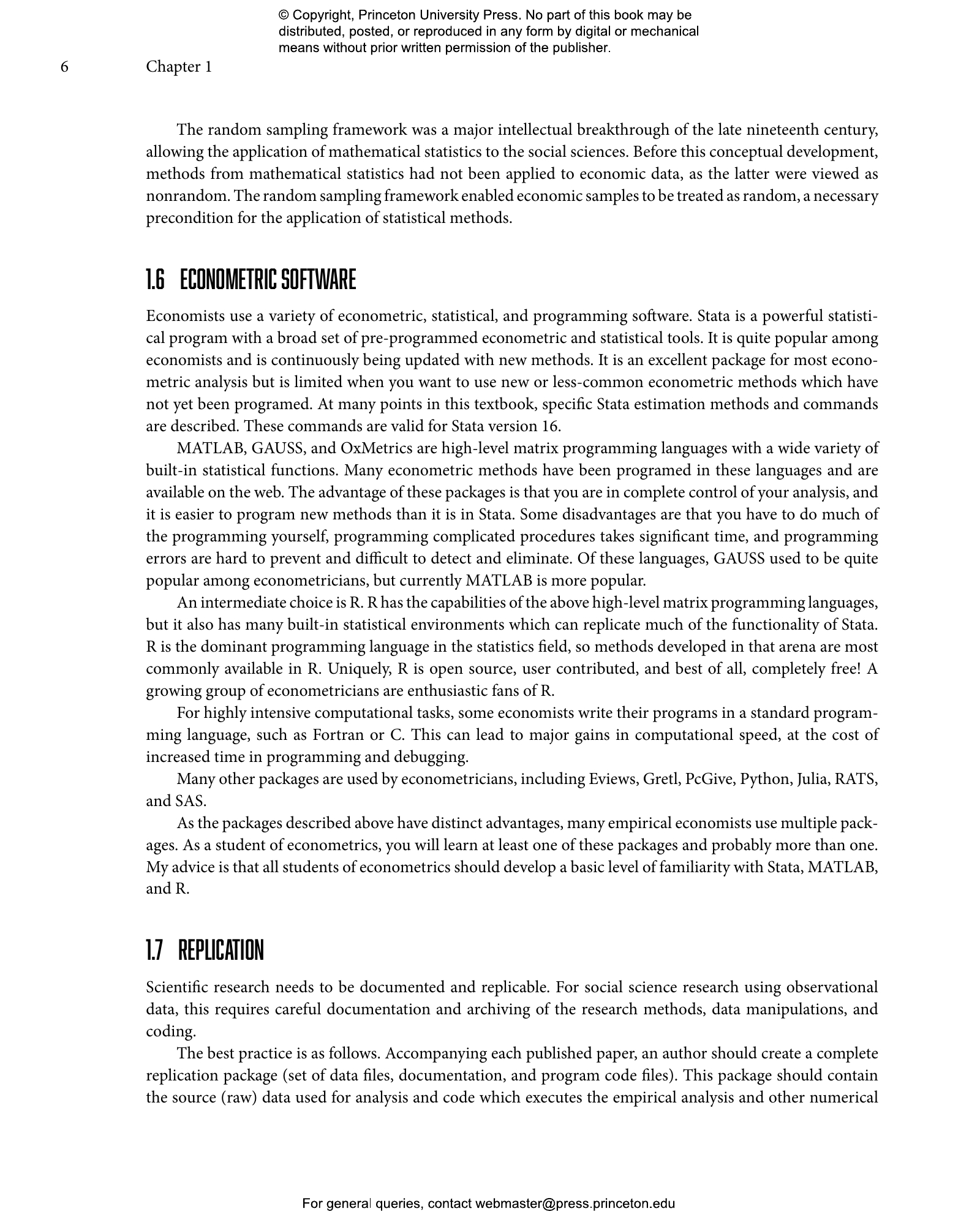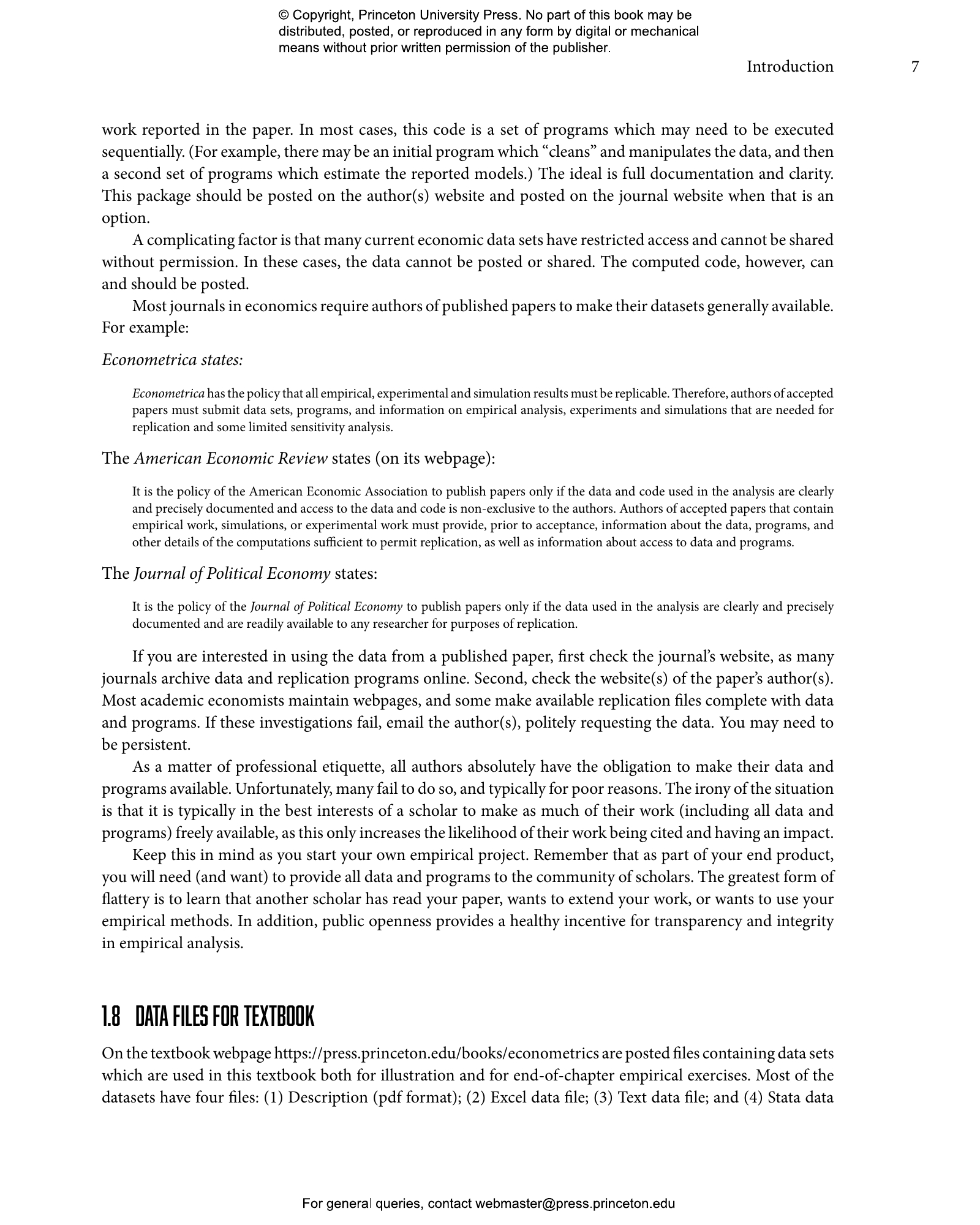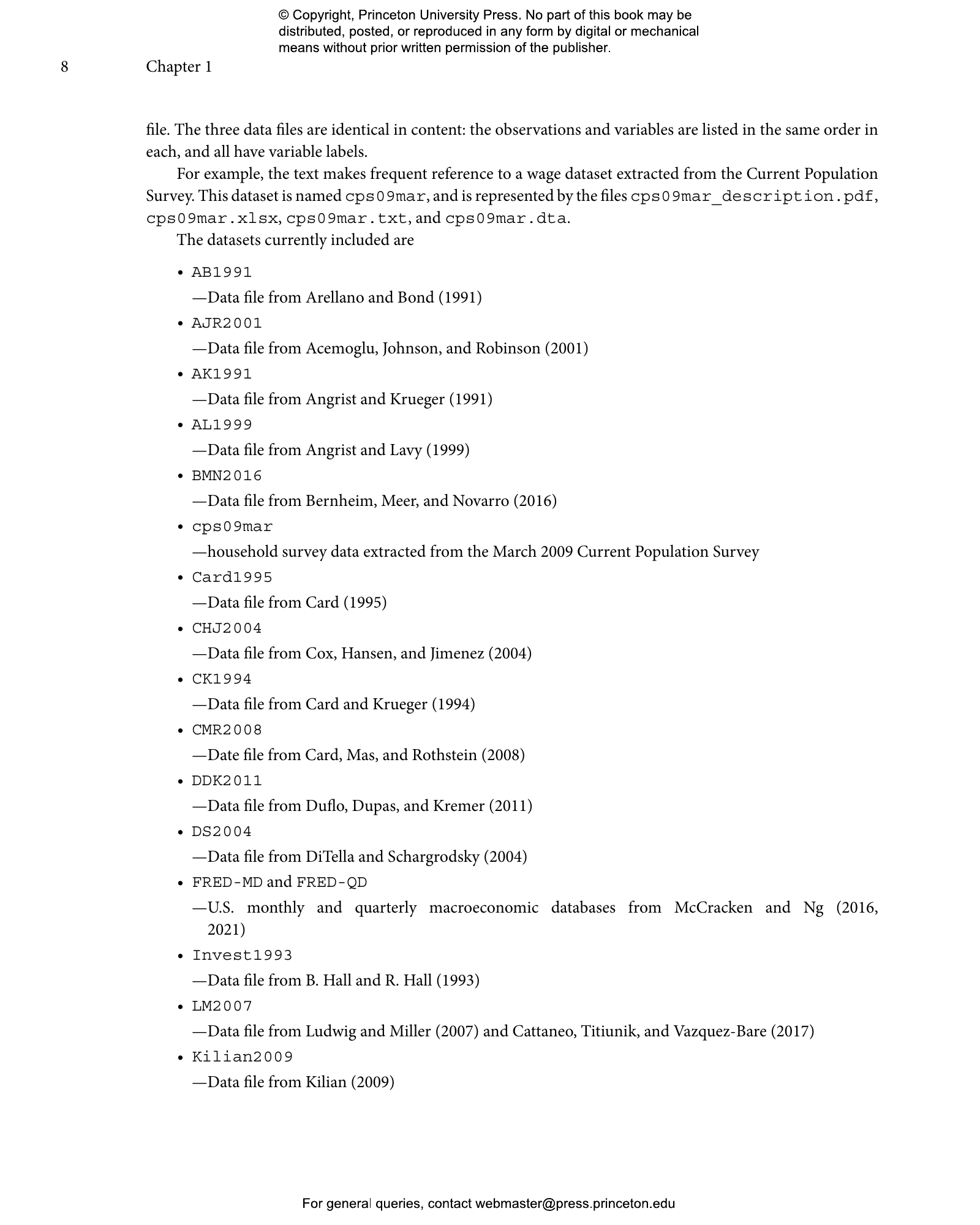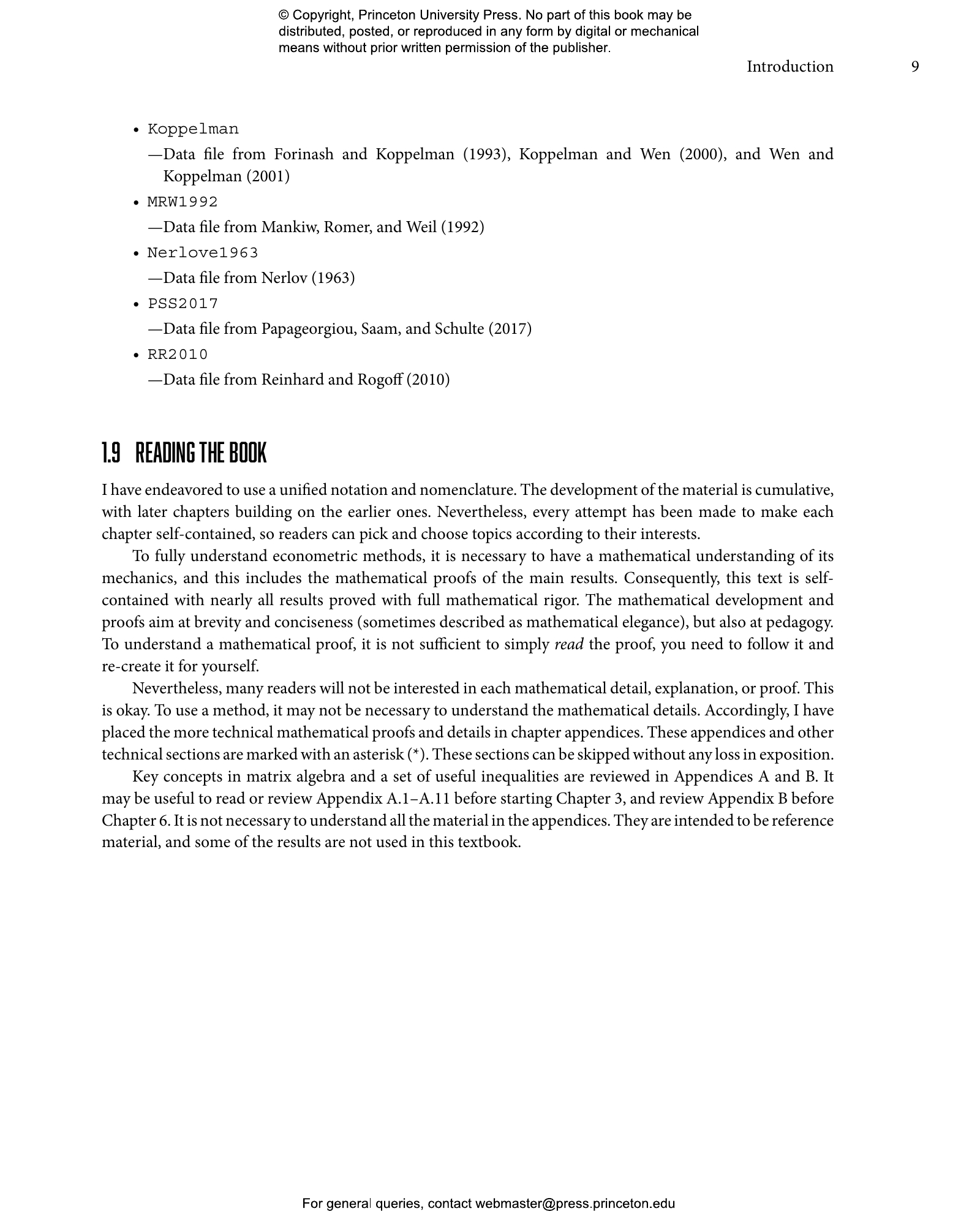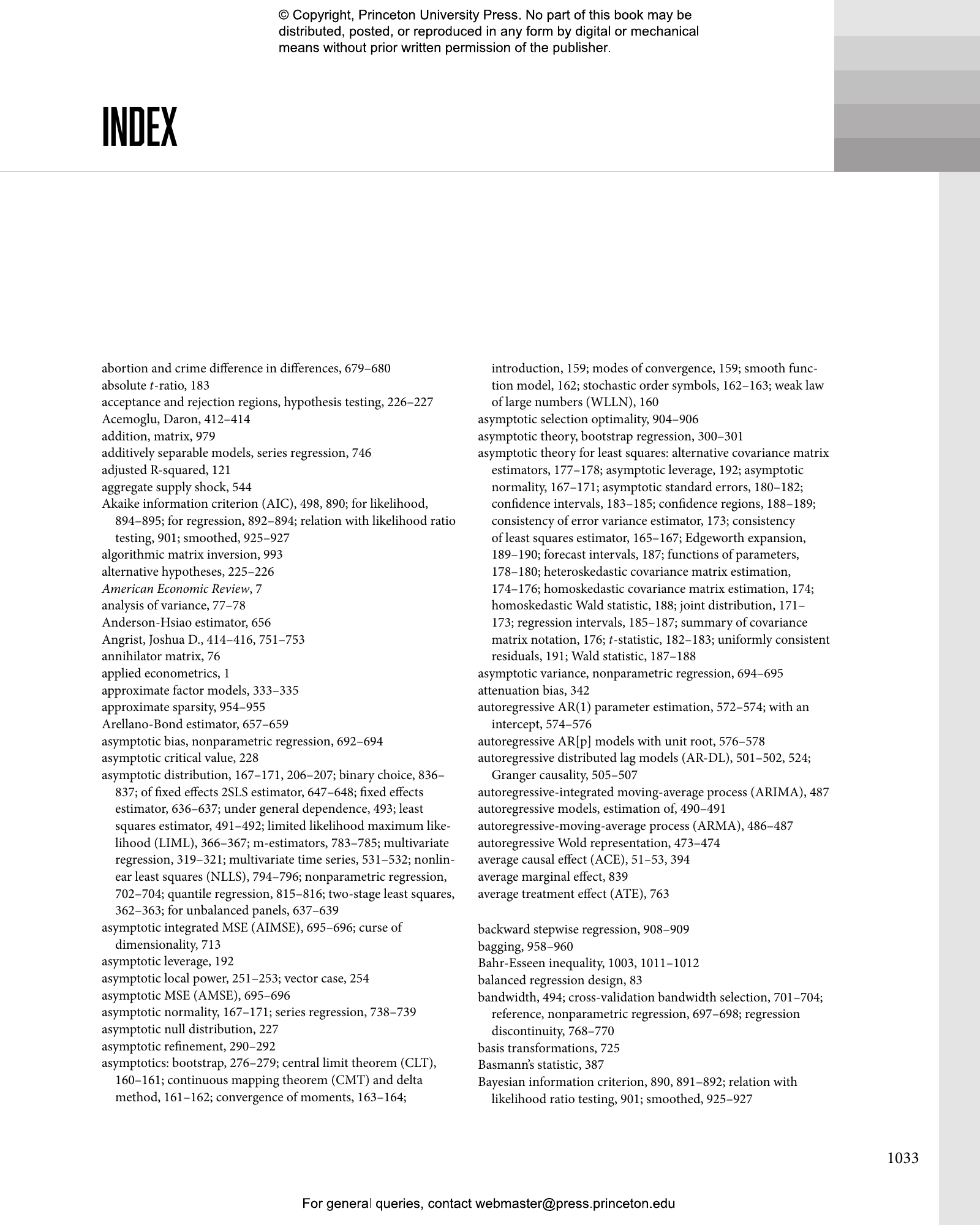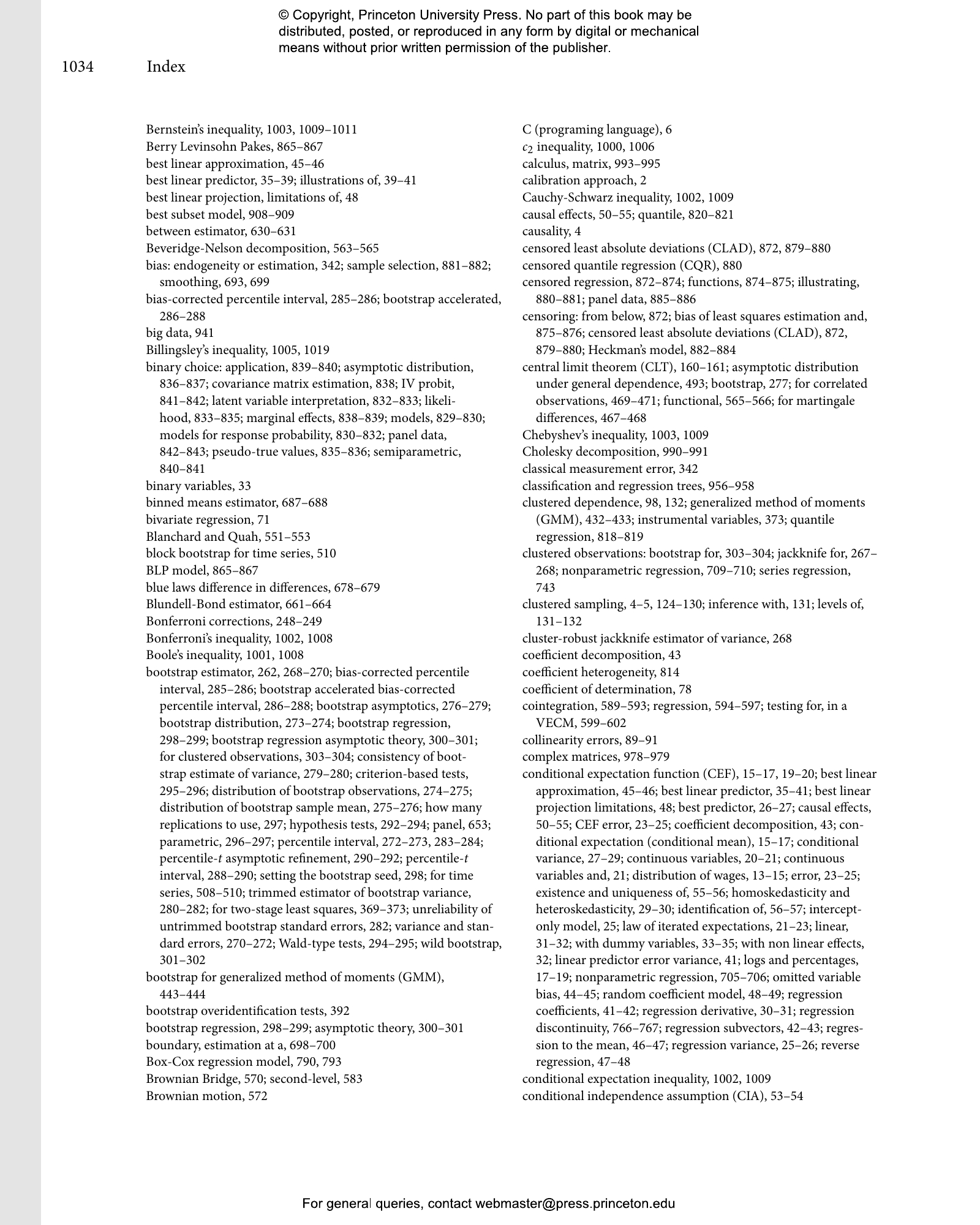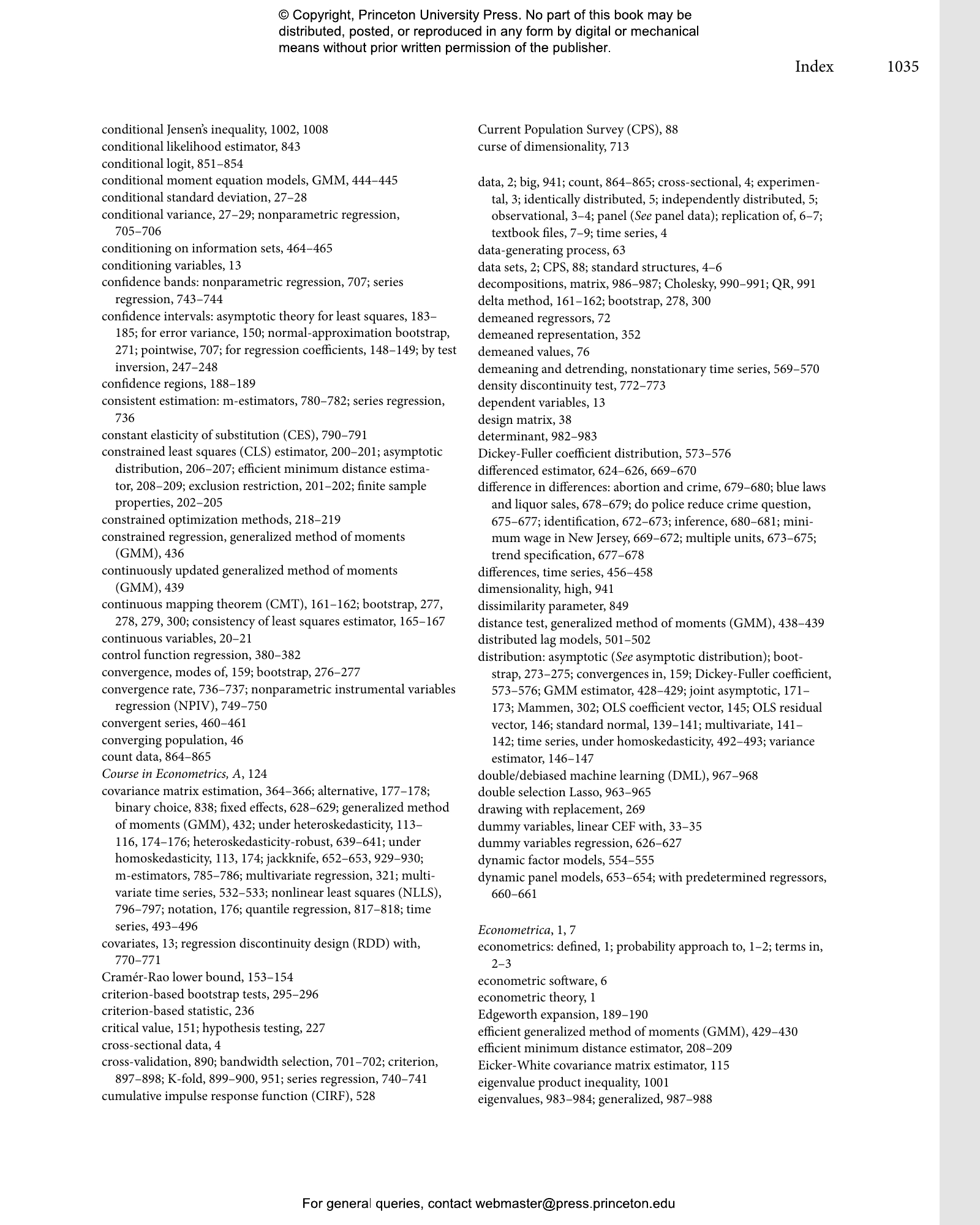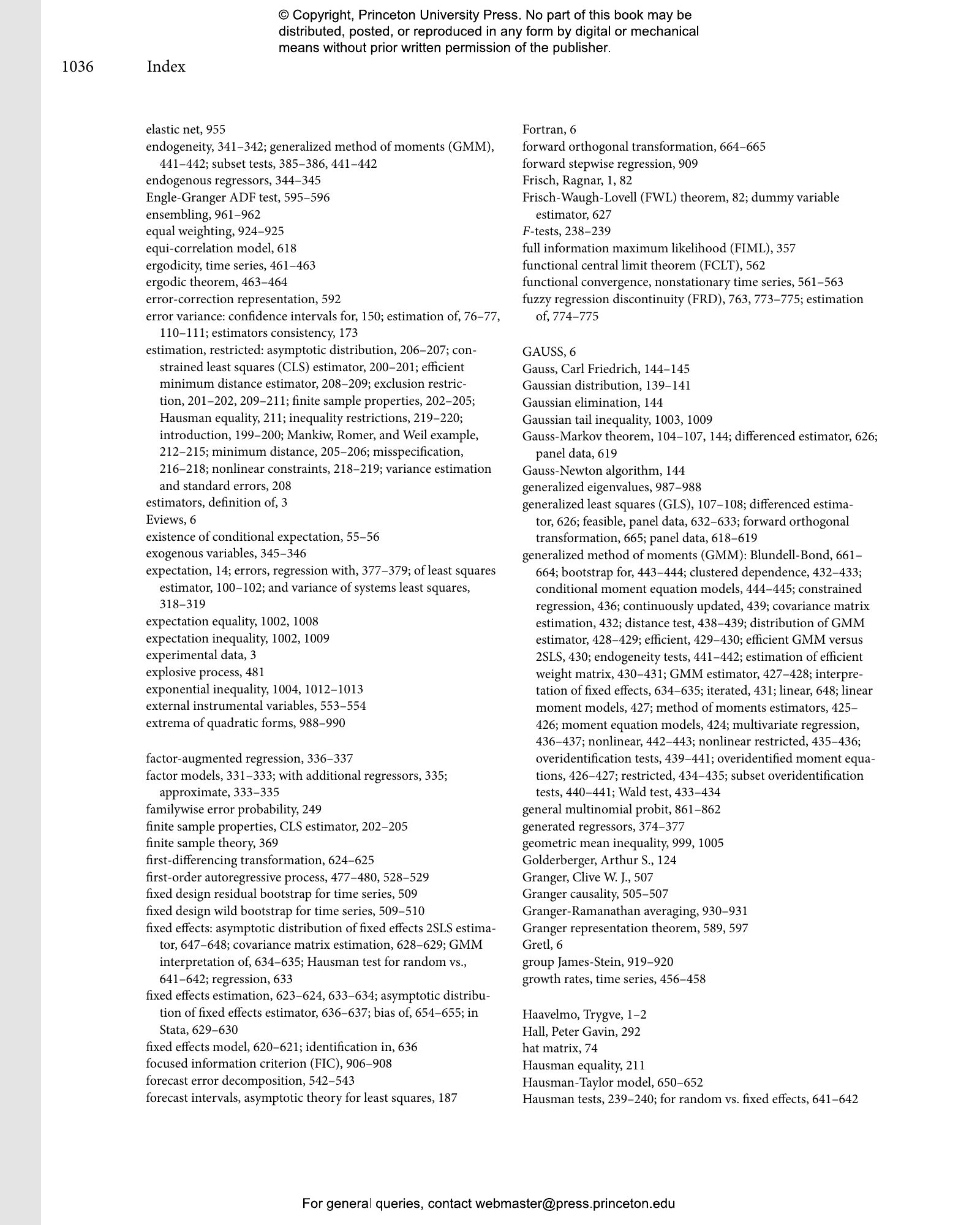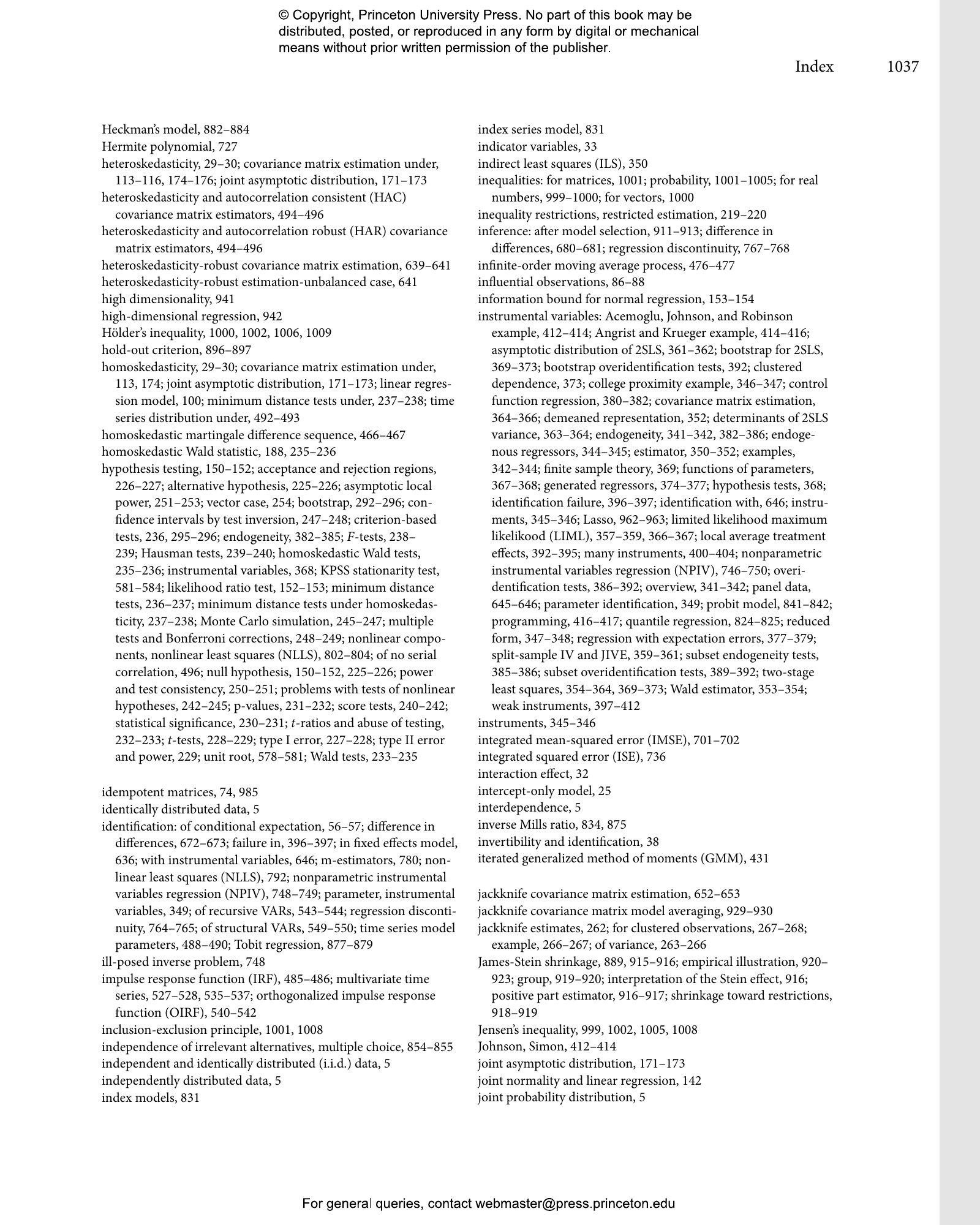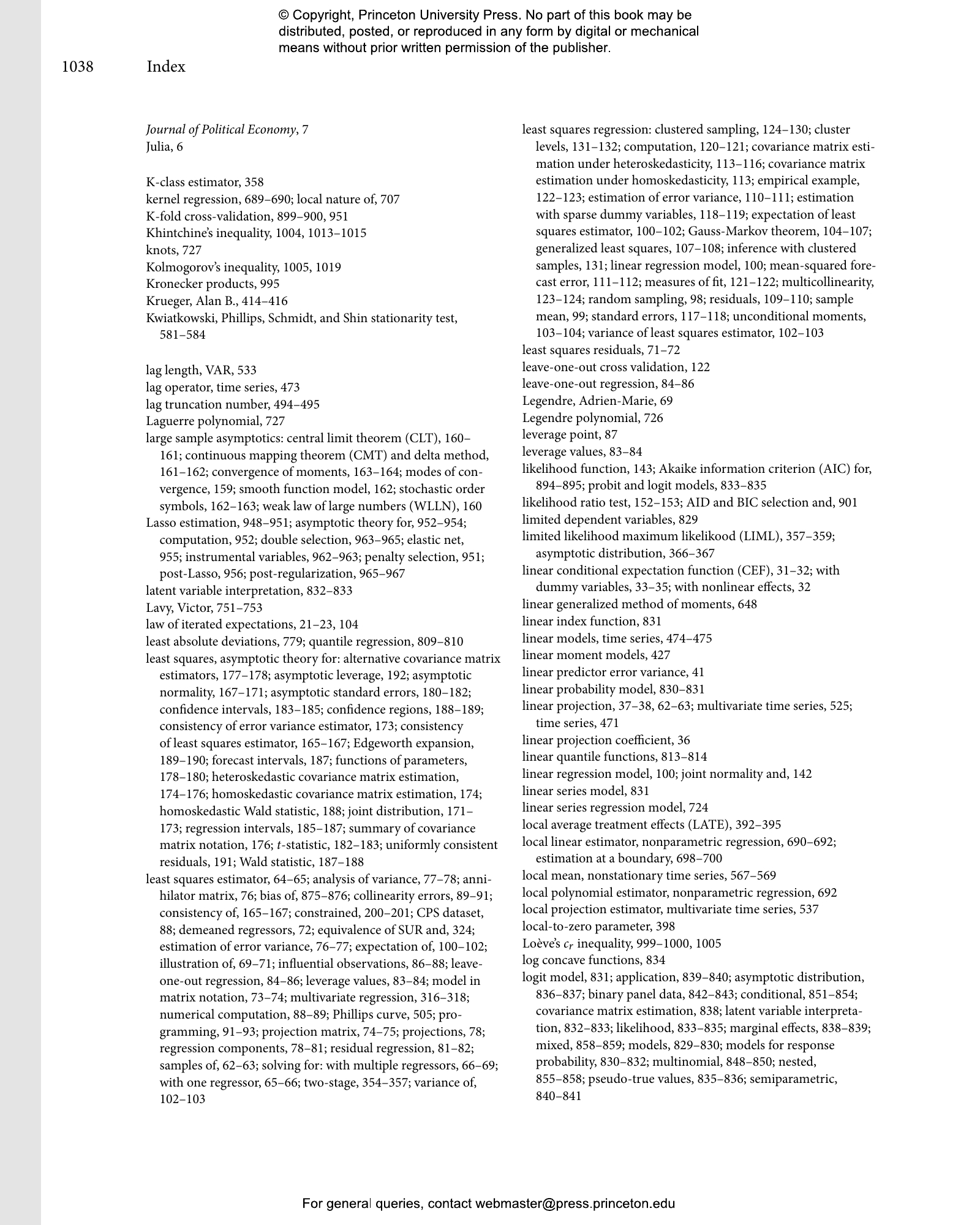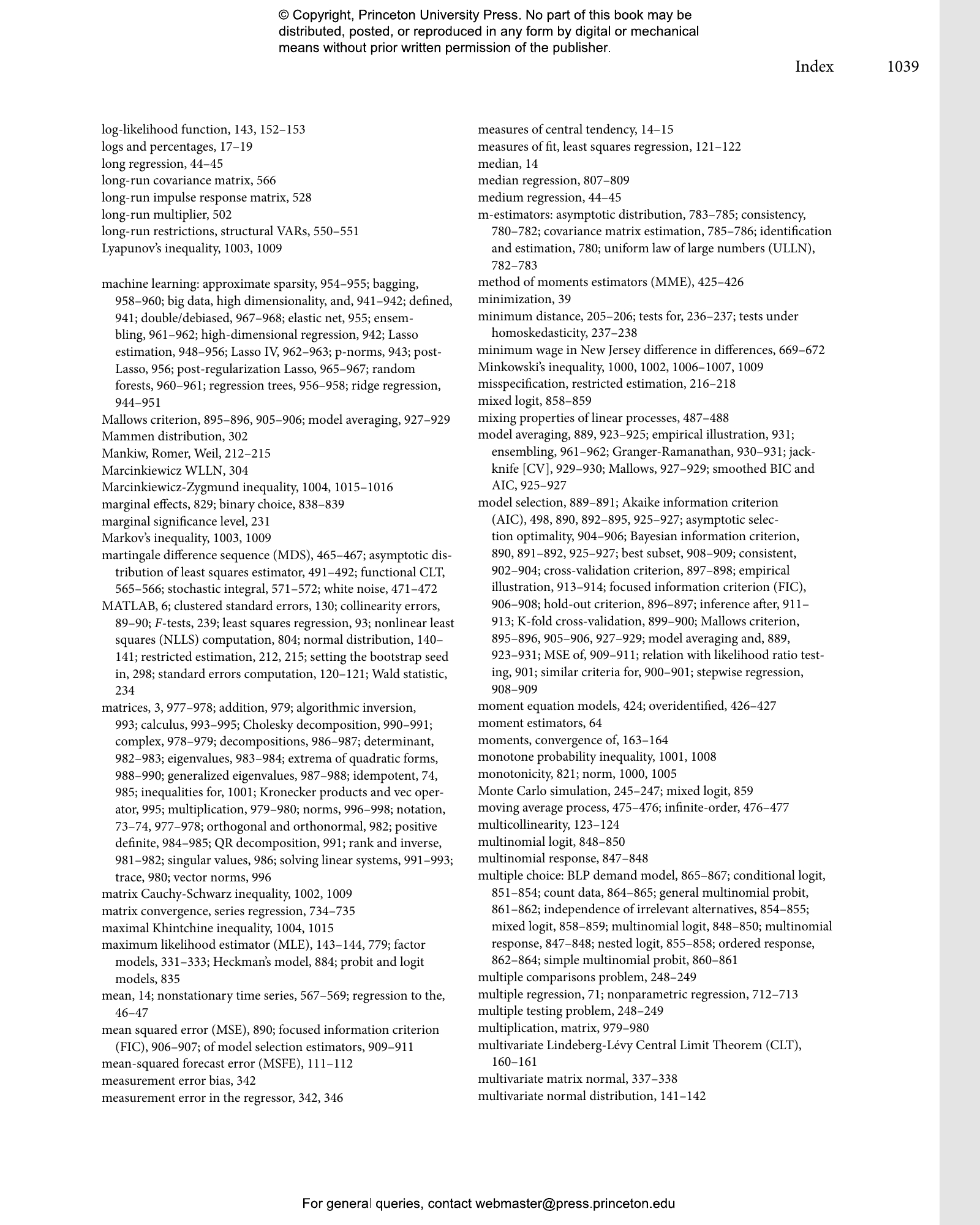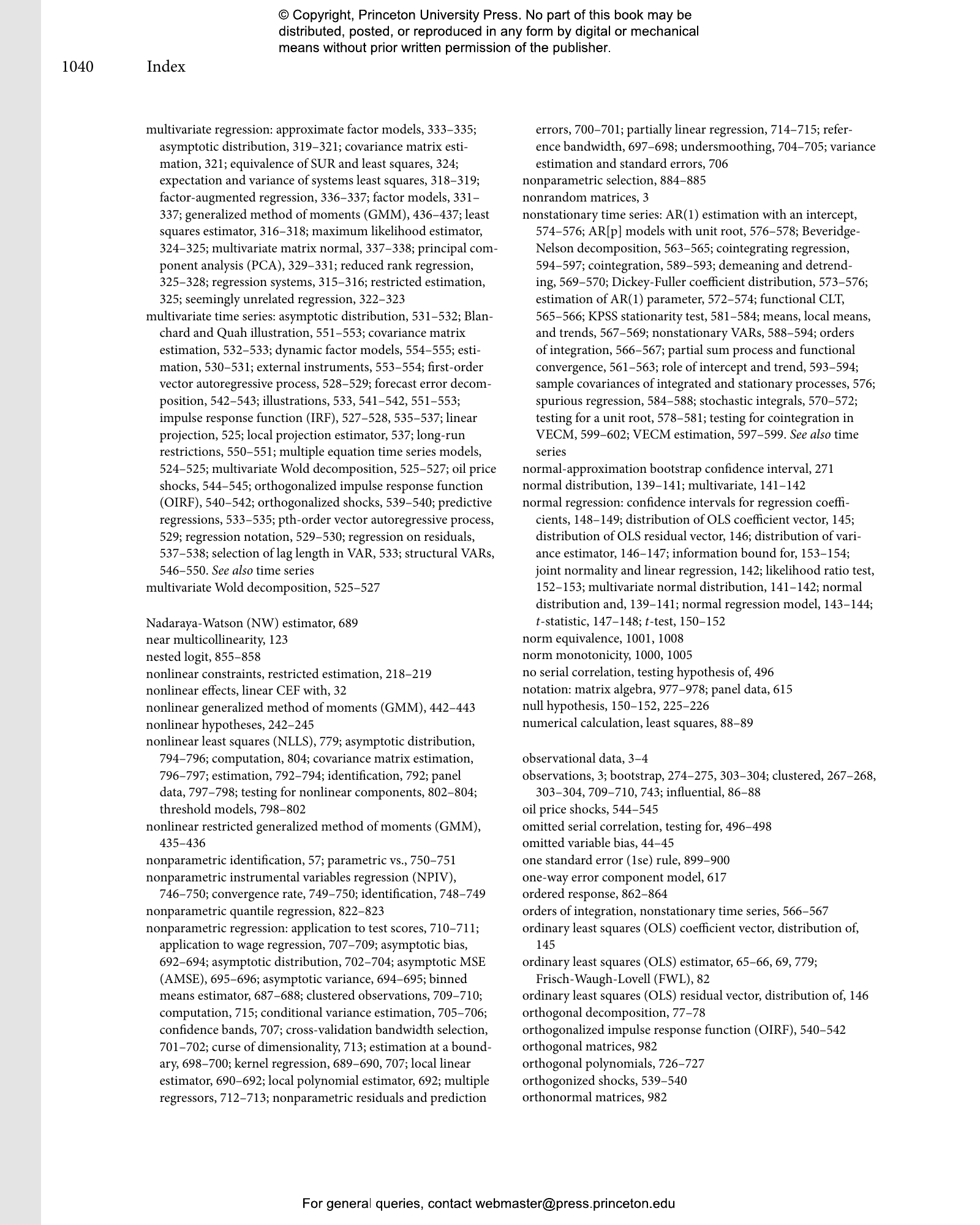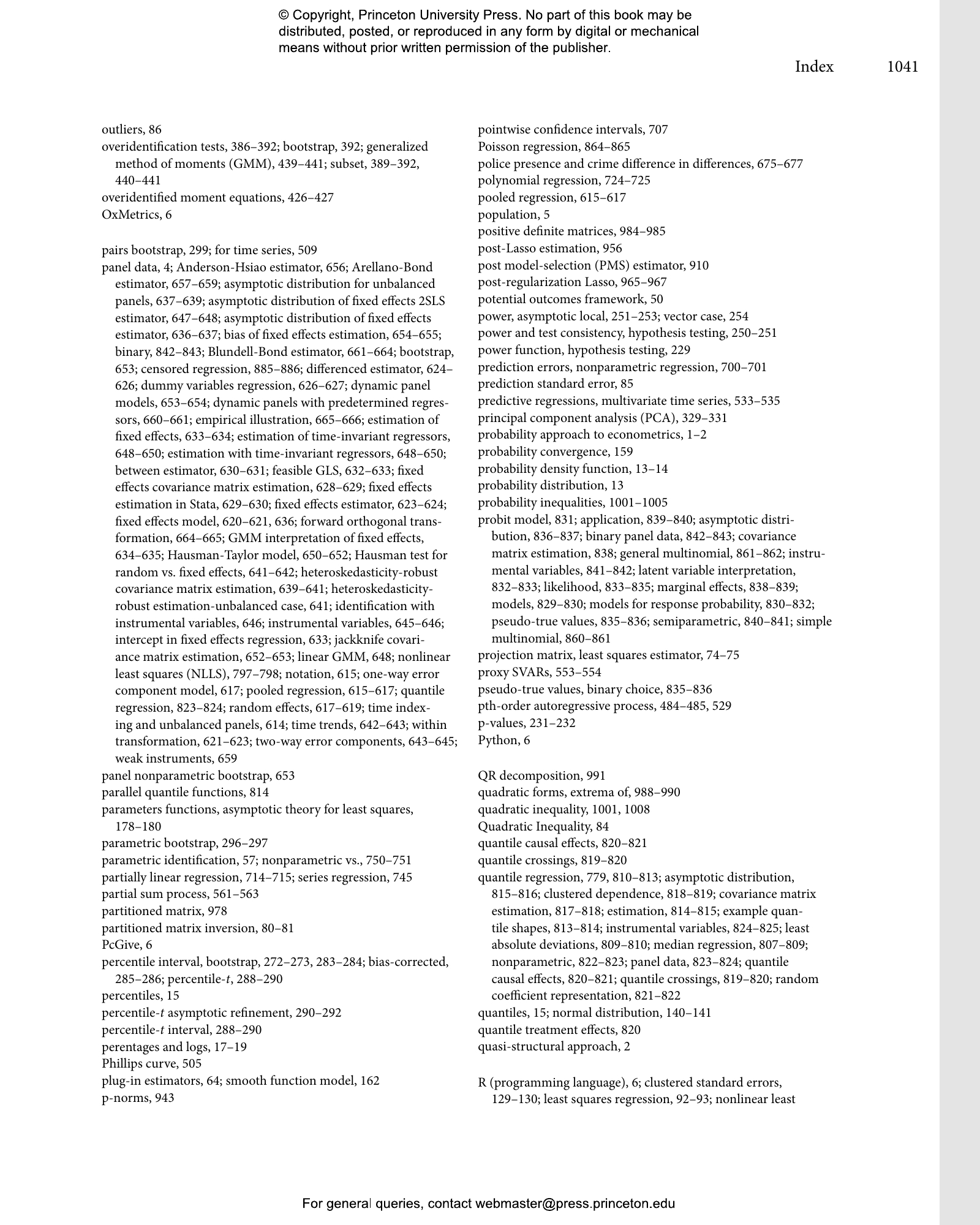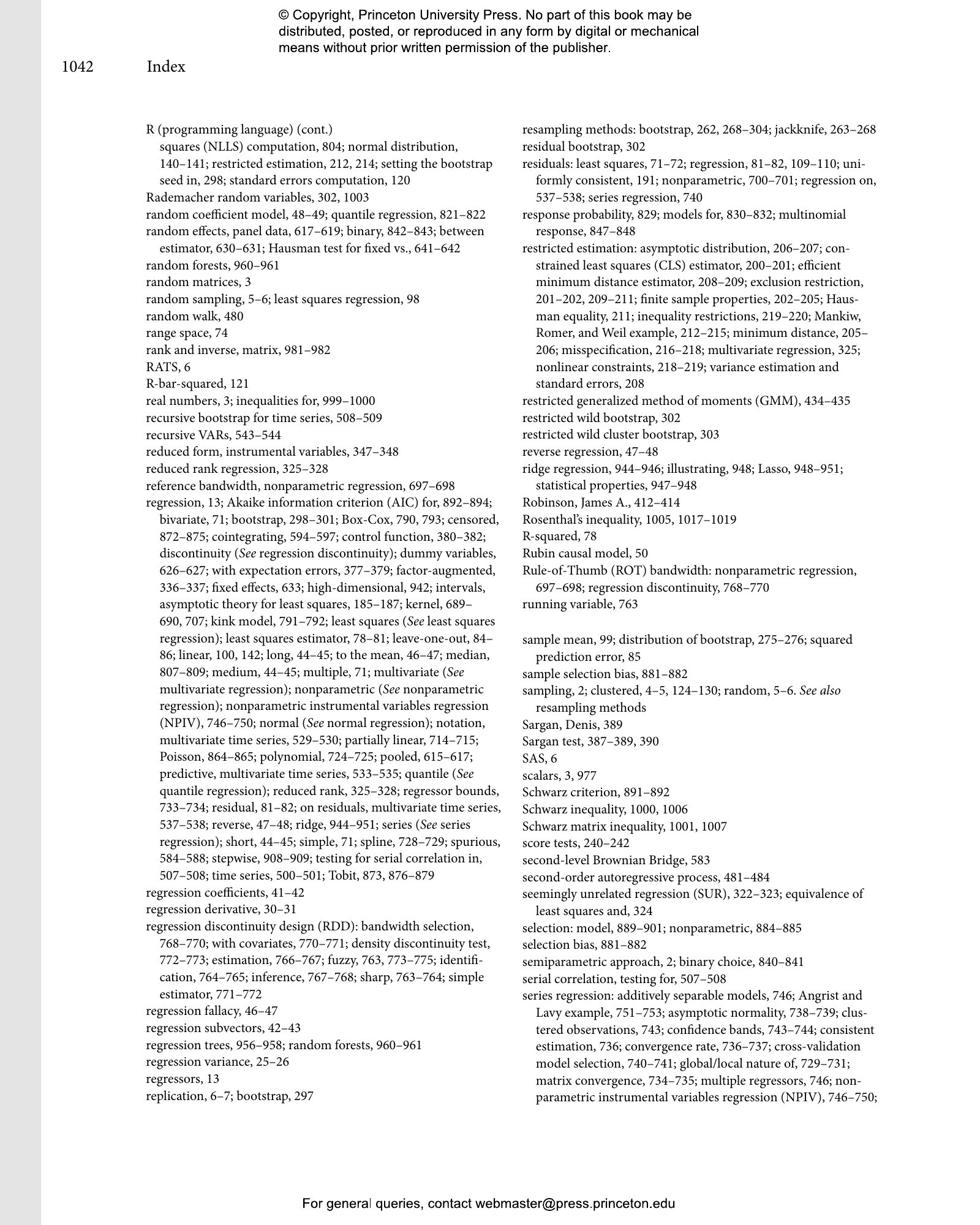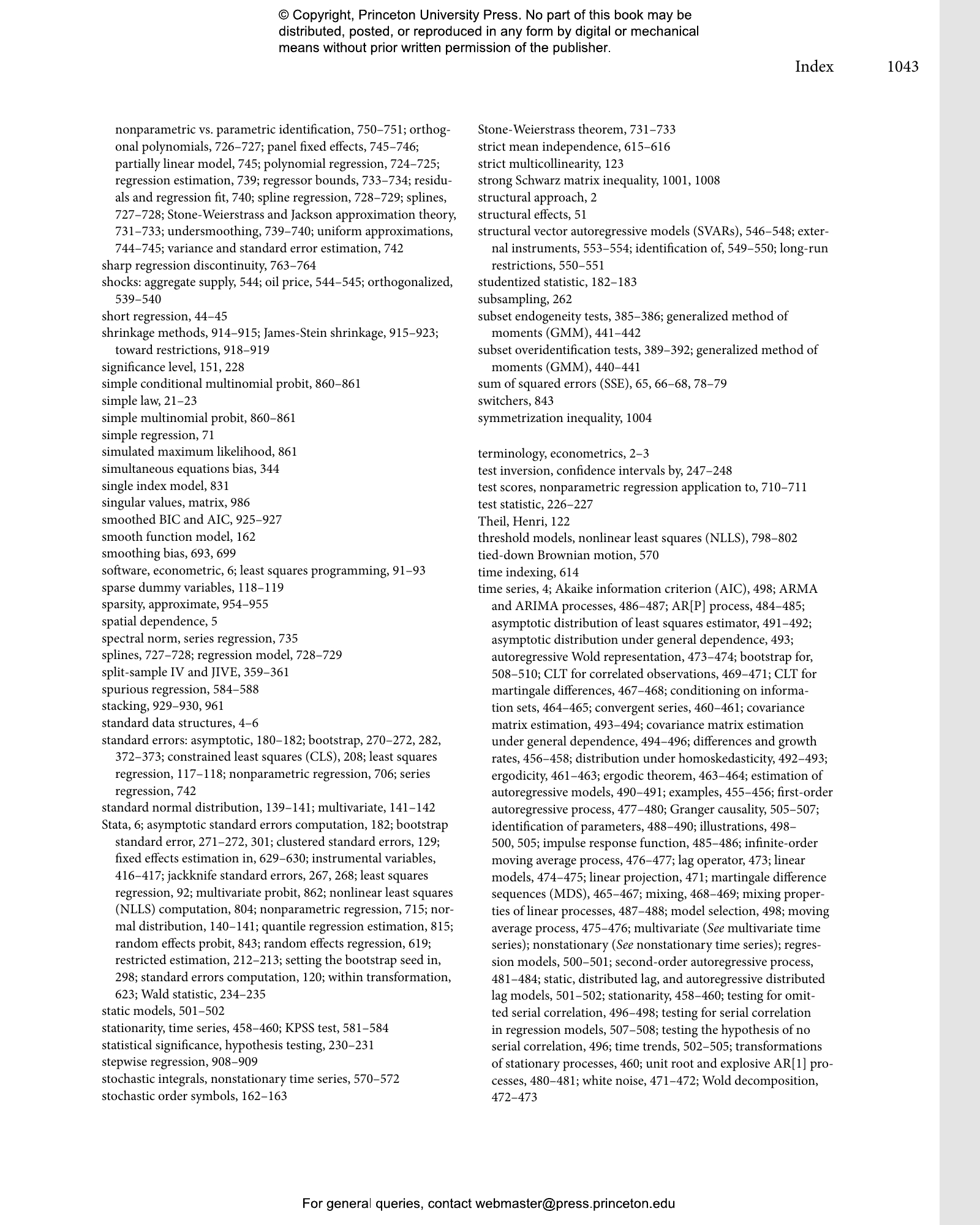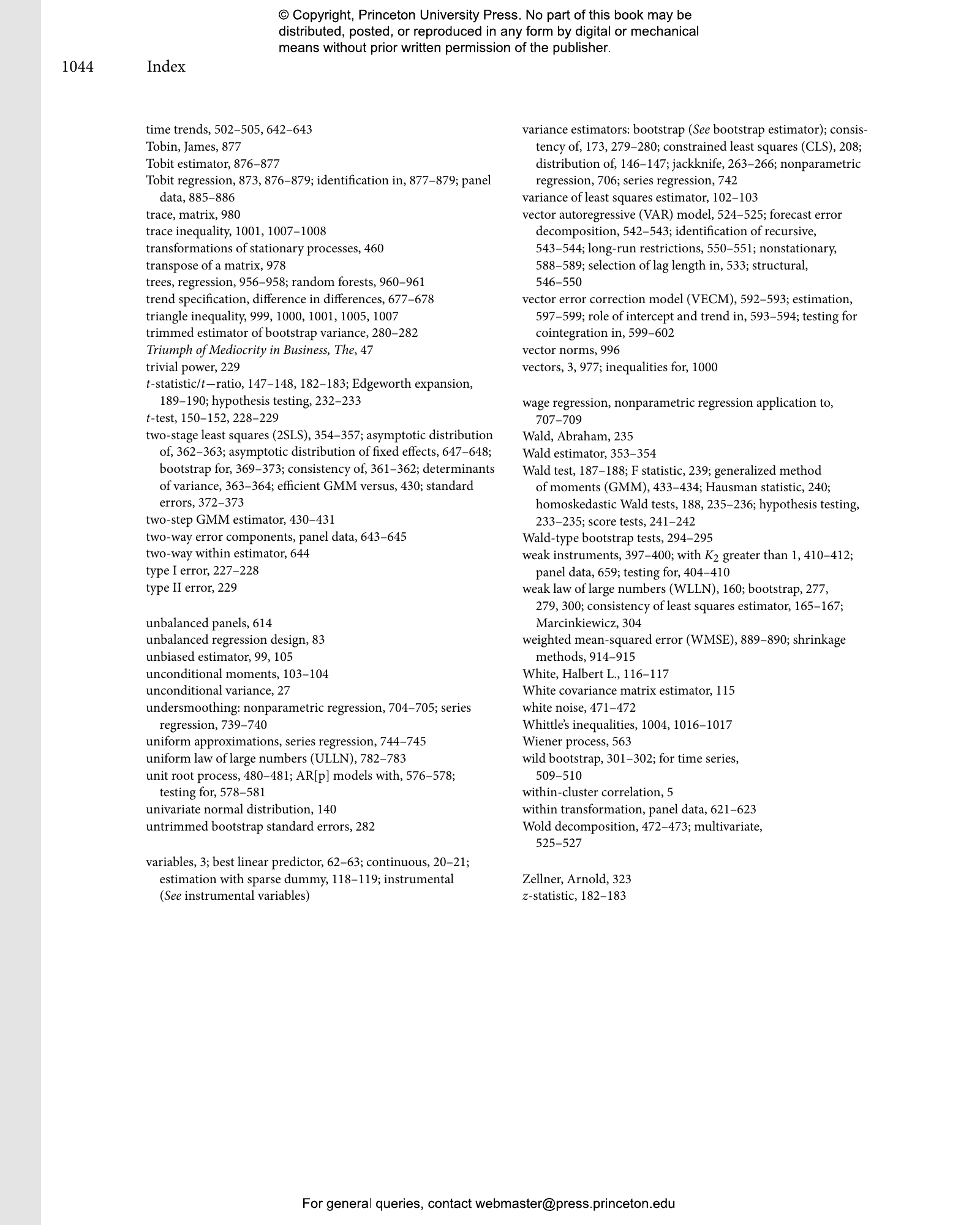Econometrics
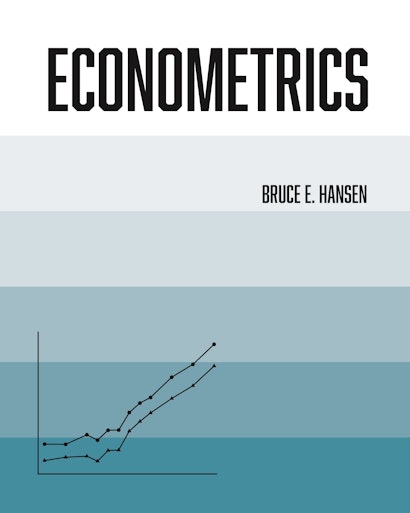

Hardcover
- Price:
- $108.00/£90.00
- ISBN:
- Published (US):
- Aug 16, 2022
- Published (UK):
- Oct 11, 2022
- Copyright:
- 2022
- Pages:
- 1080
- Size:
- 8 x 10 in.
- 167 b/w illus. 50 tables.
- Main_subject:
- Economics & Finance
ebook
Econometrics is the quantitative language of economic theory, analysis, and empirical work, and it has become a cornerstone of graduate economics programs. Econometrics provides graduate and PhD students with an essential introduction to this foundational subject in economics and serves as an invaluable reference for researchers and practitioners. This comprehensive textbook teaches fundamental concepts, emphasizes modern, real-world applications, and gives students an intuitive understanding of econometrics.
- Covers the full breadth of econometric theory and methods with mathematical rigor while emphasizing intuitive explanations that are accessible to students of all backgrounds
- Draws on integrated, research-level datasets, provided on an accompanying website
- Discusses linear econometrics, time series, panel data, nonparametric methods, nonlinear econometric models, and modern machine learning
- Features hundreds of exercises that enable students to learn by doing
- Includes in-depth appendices on matrix algebra and useful inequalities and a wealth of real-world examples
- Can serve as a core textbook for a first-year PhD course in econometrics and as a follow-up to Bruce E. Hansen’s Probability and Statistics for Economists
